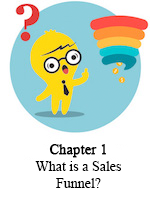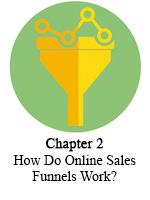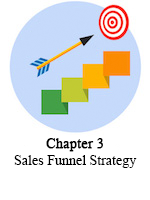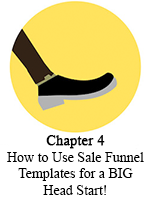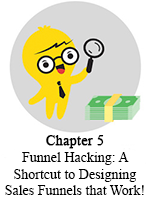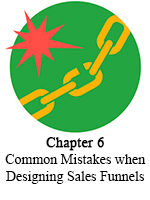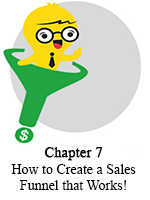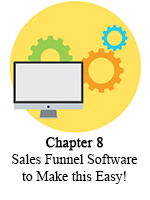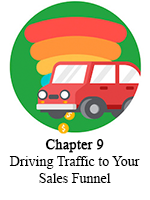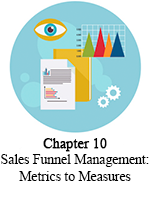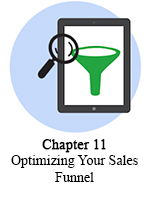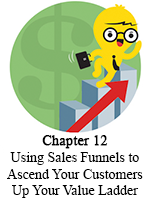
The post Sales Funnels: The Ultimate Guide appeared first on ClickFunnels.
There it was again.
That thing they kept mentioning, offhand.
“Sales funnels”
All the online gurus talked about it.
Whether they were selling new traffic solutions, courses on how to create courses, techniques to make your email marketing better, or secrets to selling more physical products . . .
. . . they all kept referring to different types of sales funnels.

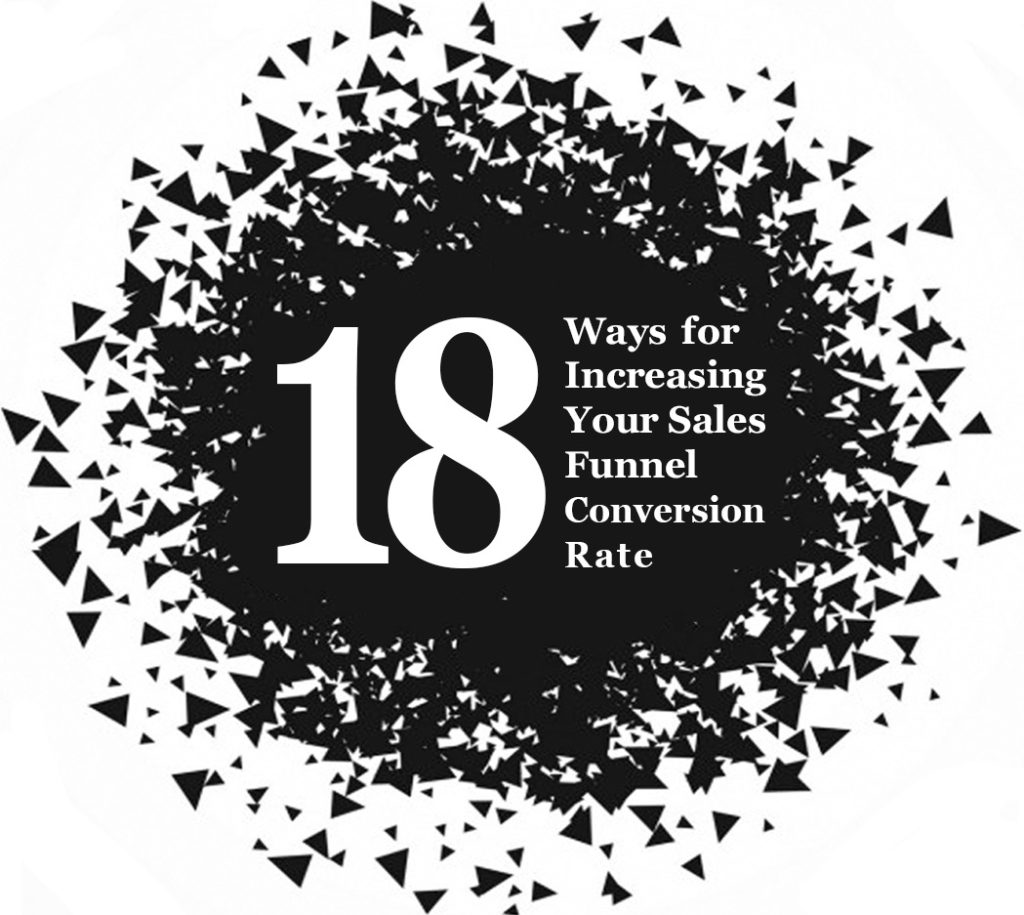
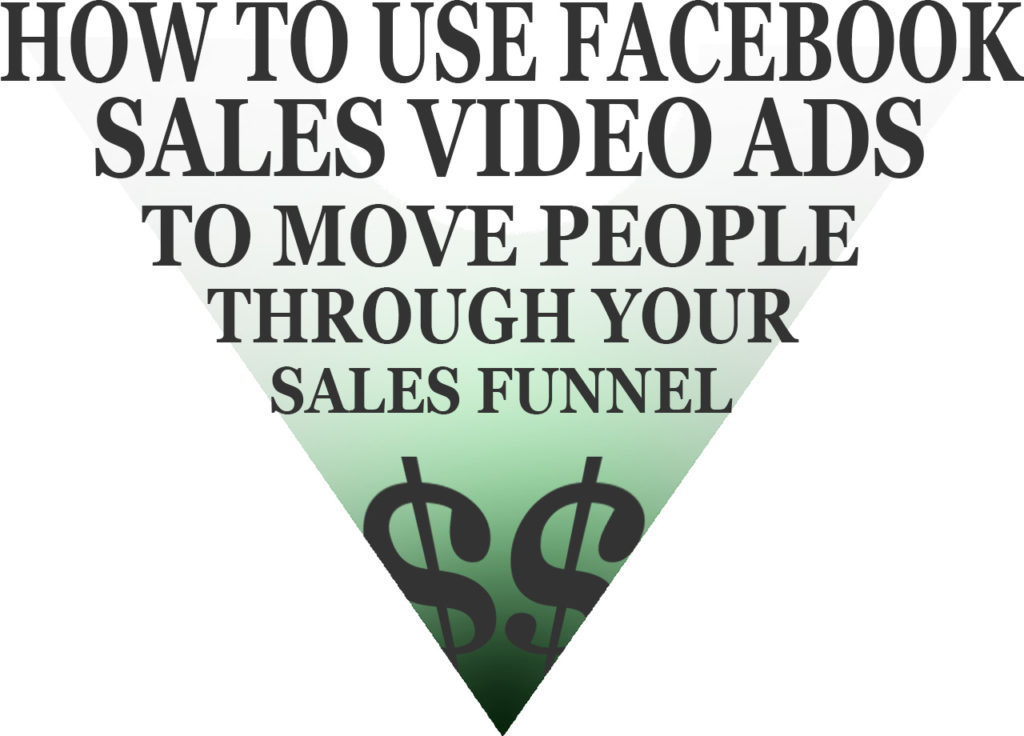
As if we all had a sales funnel, in the first place.
I didn’t.
Not 18 months ago.
And I had no idea how to create one.
———–
That was the situation I was in, when a well-timed email appeared in my inbox.
It was a marketing email for the Six-Figure Funnel Formula, a course by Todd Brown at Marketing Funnel Automation.
Being a lover of systems, I was drawn to the sales funnel template or blueprint in his materials.

This image is from Todd Brown’s 6 Figure Funnel Formula marketing.
At last! Just what I needed!
A way to understand the elusive sales funnel!
So I jumped on it!
————–
In Todd’s course, I learned about…
… market sophistication,
… creating an effective hook,
… focusing on customer acquisition
… and the steps needed to just break even getting a customer,
… how to structure upsells,
… how to structure downsells,
… how to use email marketing to increase conversions,
… etc.
After a month of immersing myself in his training, it was finally time to put it all together!
Drum roll…..
Nada.
What a pain in the butt!
Though I thought that I could set up this type of sales funnels with “a couple of cheap tools,” my tech guy and I worked for weeks to glue various pieces together.
- We set up standalone lead capture pages on our WordPress website.
- We couldn’t get the timer on the video to work right.
- We scrapped that and decided to use LeadPages.
- We set up our course in Zippy courses.
- We tried using Samcart but had integration issues with our course software.
- We began using Stripe instead, but then couldn’t integrate with Infusionsoft.
- Todd’s recommended tool for conversion tracking (Hypertracker) was set up and ready to go… but we couldn’t get our integrations working smoothly in order to even start driving traffic.
Aghh!
Luckily for me, another event occurred. Russell Brunson appeared in my inbox with a dream-come-true method for implementing types of sales funnels.
I’ll leave that story for later, but suffice it to say that if you are where I was 18 months ago…
- if you don’t understand types of sales funnels…
- If you don’t know when to use a sales funnel…
- If you don’t know how to structure them…
- Or how to build them…
- Or if you don’t even know if you need one…
… this guide is for you.
In this guide, I’ll walk you through a sales funnel template and everything you need to know about creating sales funnels: what they are, how they work, and how you can start using them to drive traffic and increase conversions, today
Let’s dive in.
Click an image to jump to a specific chapter, or continue scrolling to get started!
____________________________________________________________________________
Chapter 1 | Back to Table of Contents
What is a Sales Funnel?
Sales funnels are marketing campaigns with multiple steps. Sometimes referred to as marketing funnels or conversion funnels, each step is designed to bring consumers to the next one.
The final goal is typically to make a sale.
Breaking the buyer’s journey down into smaller steps allows you to be more precise about how and when you present an offer to your audience.
Think about ordering at a McDonald’s. If you order a hamburger, you’re asked if you’d like to add cheese. Order chicken nuggets and you’re asked if you want fries with that. Order a combo meal and you’re given the chance to make it a large or “supersize” it.
Every offer is actually a series of offers designed to increase purchase size.
Now before we dive into the modern version of different types of sales funnels, I want to let you know that the term “sales funnel” has been around for many years.
The “Offline” or Traditional Sales Funnel
Online entrepreneur and ClickFunnels founder Russell Brunson was 12 years old when he entered his first sales funnel.
As he recounts in Dotcom Secrets, Russell was watching TV with his dad when an infomercial came on, and a guy named Don Lapre started talking about using classified ads to make money fast.
Don told a story about running an ad in his local paper that made a $30 profit in the first week.
Not a big win, right?
Well, now that Don knew what sort of return he could expect, he re-invested his earnings and began running the same ad in other papers.
He ended up advertising in thousands of papers and earning tens-of-thousands of dollars a month with just one quick sales funnel template!
And for a limited time, Don was offering viewers access to his proven system—a direct sales box that would reveal all his sales funnel template secrets.
Four weeks later, Russell had saved enough money to order Don’s system.
After learning what he could from Don, Russell began looking for other companies that were employing the same kind of sales funnel template.
It seemed like everyone was offering something new—and usually free—if only he’d take the time to call or write in.
So that’s what he did.
Before long he was receiving more mail than his parents: free guides, samples, how-tos, and info kits.
As shocking as it may have been to Russell’s younger self, these companies didn’t enjoy giving away free stuff.
Why did they do it, then?
By getting Russell—and thousands of others—to write in, to receive additional offers, to pay for shipping and handling in exchange for a free product—each company was guiding potential customers closer to making a purchase.
The steps have changed a bit over time (and more so in the digital marketing age), but they all boil down to a 150-year-old process known as AIDA.

This image is from SearchSalesforce.
Attraction. Interest. Desire. Action.
The AIDA marketing model was developed in the late 19th century by advertising and sales pioneer Elias St. Elmo Lewis. And, it has become the backbone of almost every successful advertising and marketing campaign since.
Why is it so successful?
AIDA takes potential customers through the emotional journey of making a purchase, from initial attraction to taking action.
And, it works on a small or large scale. It can all be done within one page or, as I learned, as part of a larger marketing campaign.
Using AIDA in a Marketing Campaign
When you think about marketing, do you picture a catchy ad or a series of informative emails?
For many of us, it can be hard to separate the individual advertisement from the larger brand image or marketing campaign.
After all, many companies get their start because of just one great ad.
Right?
That’s what I thought when I was first starting out as a marketer.
But, even the best print or YouTube advertisement is just the first step in a buyer’s journey.
And, it’s the companies that do the work and analyze where customers are coming from (and where they go after seeing an ad) that thrive online.
Sure, the AIDA model boosts conversion rates when used on a single ad or landing page.
But, did you know it can also identify consumers earlier in the buyer journey and funnel them to the right offer sooner?
Each company Russell contacted as a child probably published ads in an effort to grab consumer attention.
Thousands of people saw those ads. Out of those thousands, several hundred had enough interest to respond and join a mailing list.
Once on the mailing list, the companies sent specific info and offers as a way to increase desire for their product or service.
The company was now selling to a warm audience that was ready to take action and make a purchase.
That can seem like a lot of effort for a small pay off.
But, remember Don’s story?
So long as companies earn more than they spent on advertising and giveaways, they can repeat the process (and revenue) on a larger and larger scale.
More than that, these companies now have enough data to review and improve their process.
Why does data matter?
Instead of repeating marketing strategies, companies can see what is and isn’t working at each step of the sales funnel. They just keep what works and revise or remove what doesn’t.
With a little testing, companies are able to create more engaging campaigns capable of reaching consumers at every stage of the buyer journey.
Now that you’re beginning to understand what a sales funnel is, I want to clear up one potential point of confusion that you and your sales team may have run into when researching “sales funnels” or “sales funnel templates” online.
“Sales Funnel” as a Process to Track Customer Deals Being Worked by a Sales Team
While searching online for information about sales funnels, you probably ran into articles talking about different types of “sales funnel” as a tool to track the status of prospects being worked by a sales team. You may have also seen this type of tool referred to as a “marketing funnel” or “revenue funnel”.
How is that different from the sales funnel I’ve been talking about?
When I worked for IBM in the 90s, we had a sales meeting every week. We talked about what deals were at what stage of the sales process, and we tracked expected revenue numbers for each prospect on a snappy little spreadsheet.
This tracking process–sometimes called a sales funnel–helped management understand what clients were in the sales pipeline and how much revenue they could expect at the end of the quarter or year.
Here is an example of a spreadsheet that HubSpot offers for tracking deals through stages of what they call a “sales funnel.”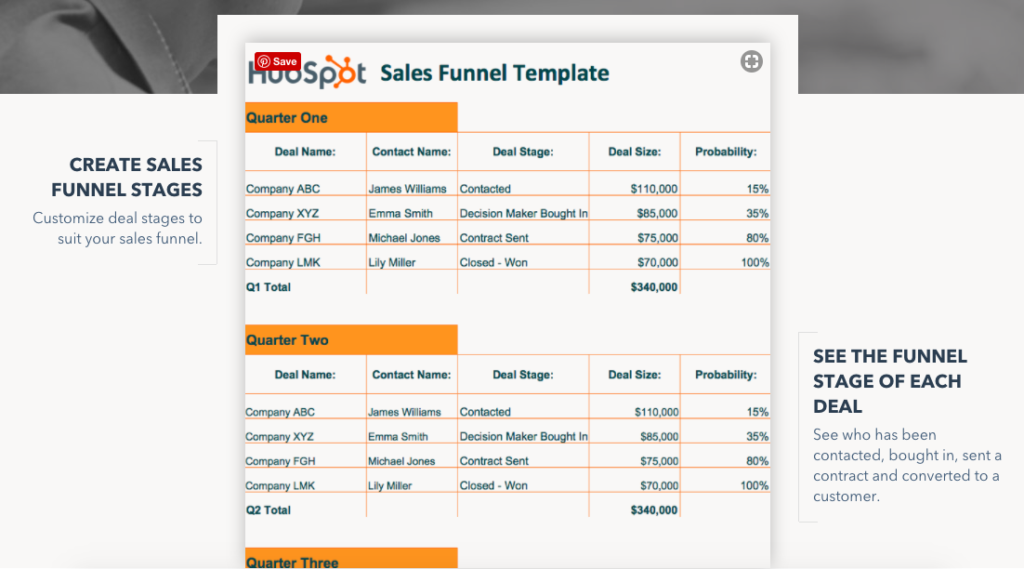
This image is from HubSpot’s Sales Funnel Template.
Companies like Salesforce provide a similar online tool for tracking the offline sales process. When business owners and sales teams say they’re using Salesforce to manage their “sales funnel,” they’re tracking leads and where customers are in the buyer journey.
This type of prospect tracking system has nothing to do with the types of sales funnels that I’m talking about in this guide!
In this article, I’ll use “sales funnel” or “sales funnel template” to represent the series of steps, pages, and incentives online that guide potential customers to a point of purchase.
Rather than a tracking system, I’m going to be showing you a proactive, automated tool that actually moves customers toward you!
And that’s where I want to focus the rest of this article—online marketing sales funnels.
____________________________________________________________________________
Chapter 2 | Back to Table of Contents
How Do Online Sales Funnels Work?
Online sales funnels are the next generation of digital marketing, regardless of your business or industry.
Not only do online sales funnels do everything the traditional AIDA model does, but they automate the process for the digital world. And, they give you better results and greater control.
The beauty of an online sales funnel, as you’ll see in the examples below, is that you can move prospects from one page to the next instead of relying on a single page to close a sale.
By moving prospects through a series of pages, you can make sure they’re in the right mindset before landing on the next page. This is called a pre-frame, and it’s one of the most important (and most ignored) parts of any types of sales funnels.
On each page, your job is to pique the prospect’s interest and desire to go to the next page, then the next, etc.
It all starts when people become aware of your brand, product, or service.
Maybe they see an advertisement, blog post, or social media promotion that grabs their attention. Once they click or type in your URL, that takes them to the first step in your funnel (typically a landing page).
At the bottom of the funnel is the action you want the person to take (generally a purchase or an opt-in).
In the middle stages of the funnel, consumers are led through a series of steps as a way to educate, build trust, and warm them up.
Here is a very simple 3-step online sales funnel template used to grow an email list.
In Step 1, the company presents their offer: a free resource tailored to their audience.

These short funnel example is from VideoMastery.com.
↓
In Step 2, the prospect has clicked on the button to get the free resource. They’ve shown they want the offer and already taken the first step, so they’re much more likely to provide their name and email.

↓
Step 3 is a simple confirmation page. It thanks the prospect for their interest, tells them how to get the free resource, and offers next steps for those customers ready to do more now.

With just 3 steps, customers can quickly move from an ad to the point of purchase.
But, what if your audience needs a little more convincing before they’re ready to buy?
Sucessful types of sales funnels that sell big-ticket offers or target cold traffic (more on this later) often include additional steps in between the landing page and the end of the funnel.
You might think adding more steps to the funnel would give prospects more opportunities to lose interest. After all, getting customers to the first page is hard enough! Why push your luck?
The length of a sales funnel is a lot like the length of the script you would use in a traditional sales pitch. If I’m selling boxes of Girl Scout Cookies, I can use a short script: my audience already knows they’re delicious, they support a good cause, and they’re only available for a limited time. If I’m selling the expensive machinery that makes the cookies, on the other hand, I’ll have to spend more time educating the prospect, answering questions, and demonstrating value.
Here is an example of a sales funnel template that has quite a few steps. It is built to target cold traffic, so that Russell can sell as many books as possible (instead of just selling to people in his hot and warm markets).
Step 1: Landing page with eye-catching headers, information about the free resource, and clear direction about how to get the offer.

These images are from Russell Brunson’s Expert Secrets book funnel.
↓
Step 2: Collecting additional information and offering an immediate upsell for hyperactive buyers.

↓
Step 3: A one time offer (OTO) before confirming the order.

↓
Step 4: Upsell and downsell options for the OTO. This provides more detail about the product, shows the size of the discount in a new way, and gives the customer options as a way to increase confidence.

↓
Step 5: The confirmation page confirms the customer’s purchase and offers bonuses and next steps as a way to quickly grow the customer relationship.
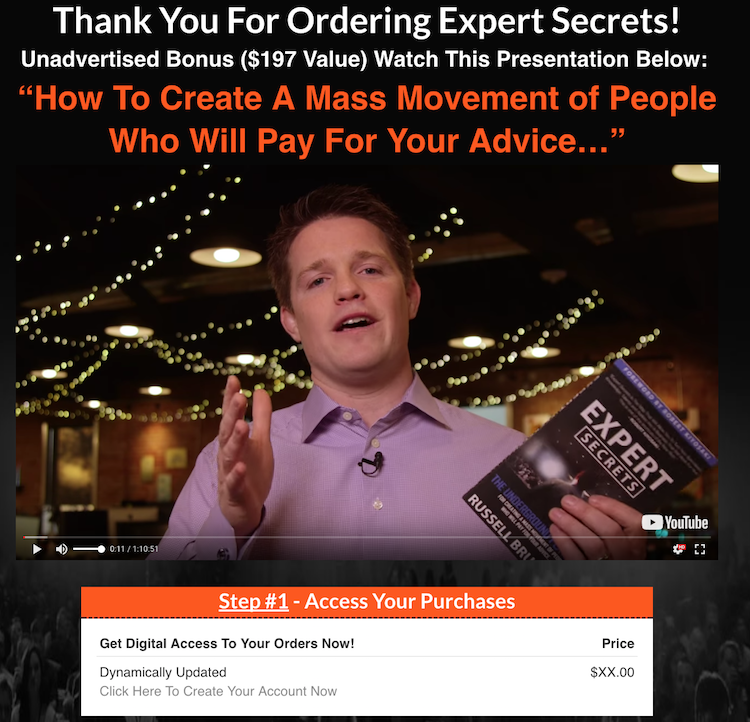
I talk more about the middle stages of the funnel—and the building blocks you can use there—later in the article.
First, let’s look at a few more examples to see how online funnels build on traditional marketing strategies. We’ll look at both B2C and B2B businesses.
B2C Sales Funnels
Business-to-customer types of sales funnels are designed to generate leads and drive sales.
At the top of the funnel, they offer free content that informs or entertains their audience.
The company takes note of how visitors engage with different content and offers, then directs potential customers to the appropriate sales funnel (the one they’re most likely to engage with).
In the following type of sales funnel, the first step is an article on a website.
Whole Lifestyle Nutrition (Opt-in Funnel)
Whole Lifestyle Nutrition by Halle Cottis uses a standard opt-in funnel as a way to grow their email list. The goal is to turn visiting traffic into traffic they own (through an email list or Facebook follow).
First, Cottis uses recipes, meal plans, health tips, and natural solutions to bring traffic to the website.
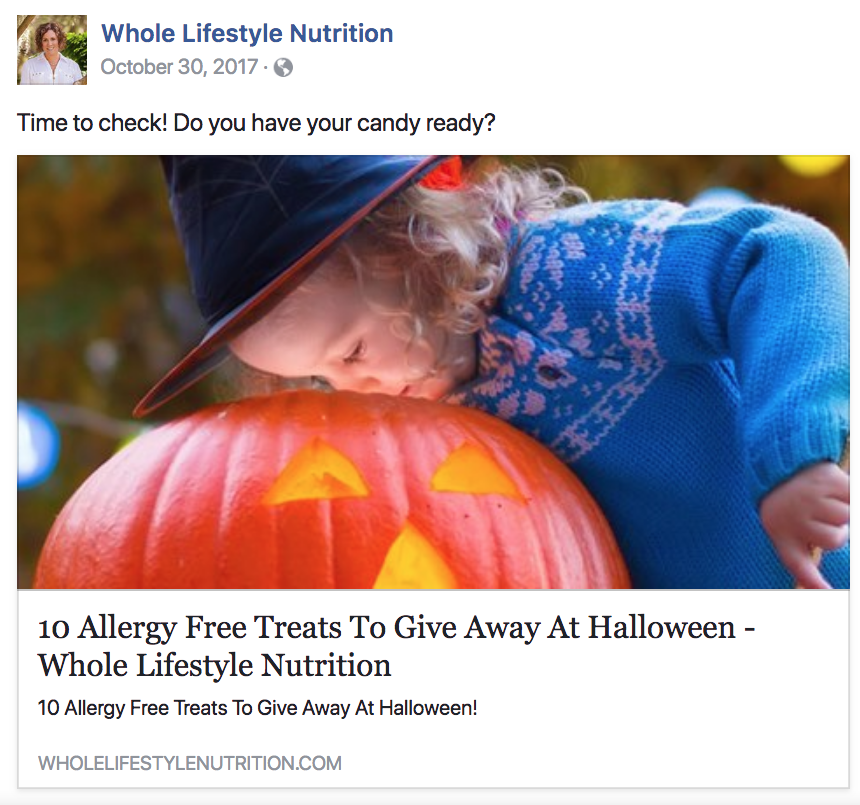
This image is from the Whole Lifestyle Nutrition Facebook page.
↓
Once on the site, potential customers find TONS of useful information at no cost.
As people read through the recipes and learn about meal planning, they’re gaining awareness about specific nutrition challenges and available solutions.

These images are from the Whole Lifestyle Nutrition website.
↓
Once visitors see how much great information is on the site, they gain trust in the brand and are more likely to click the banner ad.


This final landing page removes links to the rest of the site, giving prospects a clear option: snag the free resource or don’t.
Sure, some people will leave the site. But, many others will submit their first name and email.
And, the description of the offer makes it hard to justify leaving empty-handed. People see not only what they’ll learn in the video presentation, but at exactly what point in the video they’ll learn it.
Including timestamps is a subtle addition that can increase conversions by piquing interest and reducing the commitment prospects are making. Not only are people getting a free video—they don’t even have to watch it all!
And, once they’re on the Whole Lifestyle Nutrition email list, Cottis can sell to them in a more intimate and higher-converting setting: email marketing.
Pro Tip: Did you notice that Cottis mentioned “FREE GIFTS” in the description of the presentation? Not only will this promise encourage potential customers to watch the whole video (establishing value), but they’re already primed to hear about new offers and solutions the brand can provide.
B2B Sales Funnels
Business-to-business types of sales funnels tend to follow a more direct, solution-focused path than B2C types of sales funnels.
Rather than trying to appeal to a wide array of potential customers at different stages in the buyer’s journey, B2B businesses are typically addressing people that know what type of solution they need.
ProFit Marketing Solutions (52 Done-For-You Newsletters)
ProFit Marketing Solutions is a company offering digital marketing services to fitness professionals and businesses.
Monthly blog posts, social media, and word-of-mouth referrals bring businesses to the site.

This image is from the ProFit Marketing Solutions Facebook page.
Once on the site, visitors learn all about the problems fitness professionals face and the solutions ProFit provides.

These images are from the ProFit Marketing Solutions website.
A large banner at the top of the page encourages businesses to schedule a consultation. And, businesses see the same banner at the top of each page they visit.
ProFit knows site visitors are typically fitness professionals looking for help generating leads. But, lead generation can be a complicated topic for many business owners and entrepreneurs. So, ProFit offers a consultation as a way to change up the selling environment and increase conversions on their high-end marketing service.
Not every visitor is going to be ready to schedule a consultation on their first trip to the site. (Wouldn’t that be nice, though!)
So, to make sure it doesn’t miss out on potential customers earlier in the buyer journey, ProFit also offers 52 ready-made newsletters that fitness professionals can use right away.

That’s one year of weekly newsletters for under $100!
And, because the offer brings people to a separate page from their website, they’re eliminating distractions and ensuring businesses look at the details that make the offer so compelling.

ProFit Marketing Solutions uses this click-or-leave squeeze page to create a feeling of scarcity and define the offer in new terms.
The 52 newsletters are available at “over 80% off” and “for a limited time only”. Put another way, each newsletter only costs less than $2.
Not only that, but each newsletter saves time those businesses would have otherwise had to spend creating their own content.
Suddenly, the offer seems like a no-brainer!
And, as soon as a user clicks on the button to get their newsletters, a pop-up form asks for their name and email.
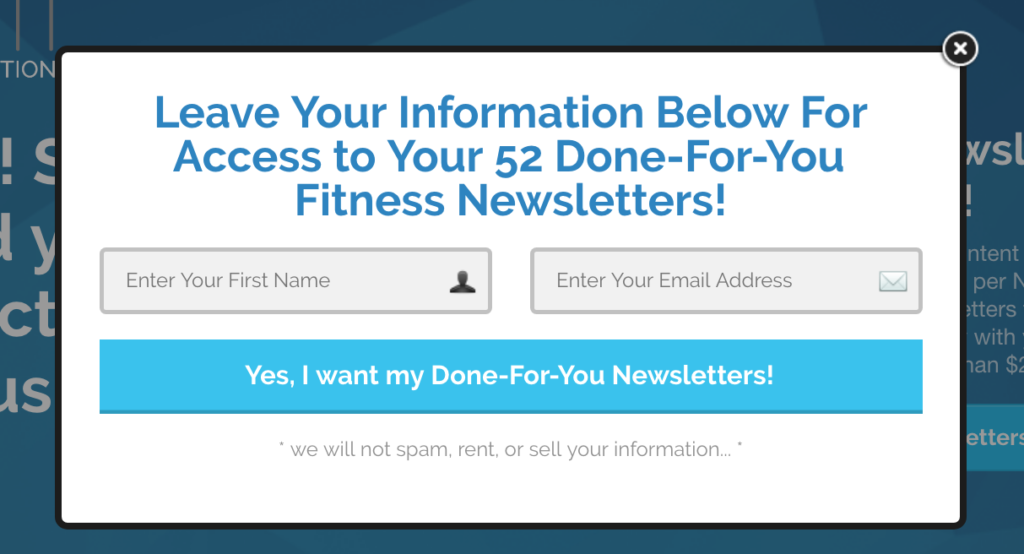
ProFit is not only turning a site visitor into a paying customer, but they’re collecting the information they’ll need to grow that customer relationship through email marketing and personalized offers.
Ok. So funnels can work for any business–B2C or B2B.
But, what if you already have a high-traffic website? Do you still need to build a funnel?
Why Use a Sales Funnel Instead of a Website?
Perhaps, like I had, you’ve already put a ton of work into your website.
You’ve written sales pages, published blog posts, updated the design of your website, and included incredible offers and incentives to grow your presence online.
Perhaps, you’ve even done some SEO work and you’re ranking on page one for some high traffic terms.
Why, then, do you need to create a sales funnel separate from your website?
If it ain’t broke, don’t fix it, right?
Remember, all types of sales funnels are about guiding customers to a specific action.
That means eliminating distractions and controlling what they see at each stage. And, that’s much harder to do on a website where people can wander off the sales funnel path and navigate to any page or blog post they find interesting.
In addition to eliminating distractions, keeping your sales funnel separate from your website makes it easier to:
- track sales and conversion data
- measure the effectiveness of individual steps in the funnel
- send customers to different sales paths depending on past behavior.
As Todd Brown taught me 18 months ago, the problem with most websites isn’t traffic (especially if you don’t limit yourself to organic traffic, only).
The problem is that you aren’t in control of the traffic.
And that’s where any type of sales funnels provide an advantage. They keep people on the path that you want them to take. Each page pre-frames the visitor to go to the next page, which pre-frames them to go to the next, and so on.
Your chances of securing a new email opt-in or making a sale are much higher if you control what page prospects see first, then second, and so on.
Now, what should you show them on each page?
____________________________________________________________________________
Chapter 3 | Back to Table of Contents
How Do a Sales Funnel & Value Ladder Work Together?
An automated process that directs customers to relevant offers and upsells sounds great, right?
But, how can you know what your sales funnel template and sales funnel should include?
That’s where the value ladder comes in.
While a sales funnel guides customers through a series of steps and offers, it is the specific offer–and where that offer is on your value ladder–that determines what funnel you use.
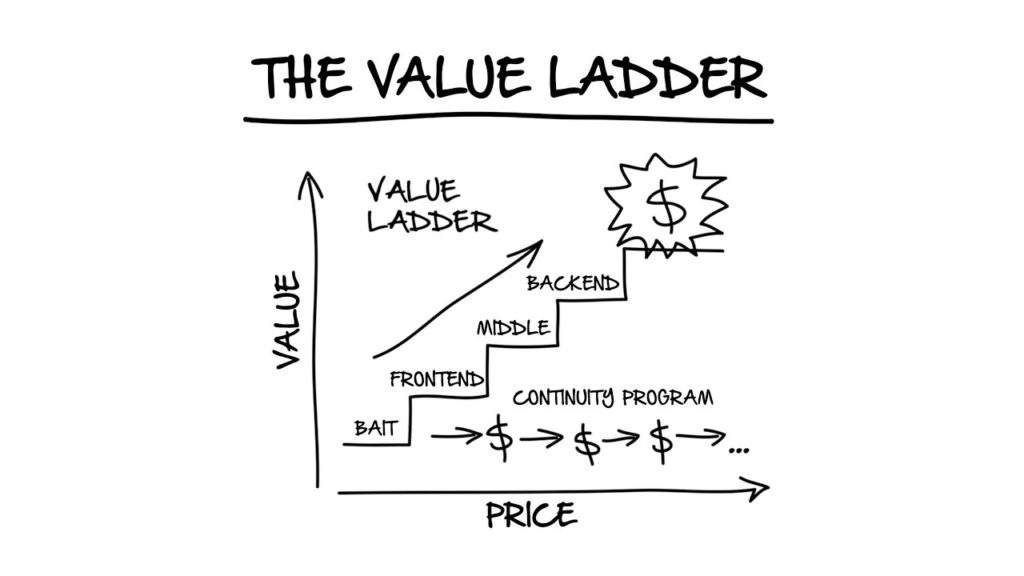 This image is from Russell Brunson’s DotCom Secrets book.
This image is from Russell Brunson’s DotCom Secrets book.
What you really want to do is bring potential customers into your world. And, the easiest way to do that is through a low-cost, low-resistance offer—like a Free + Shipping offer or a free trial.
This low-cost offer is the bottom of your value ladder. After a customer purchases this initial offer, you can guide them into another sales funnel for a product at a higher level of your value ladder.
Each step up on the value ladder brings customers to a higher-cost (and higher-value) product or service.
And, each level (or step) of the ladder will have its own sales funnel strategy.
For example, in my company, CounselingWise, I provide online and content marketing education and resources for therapists and mental health professionals.
The starting point on my value ladder is a $1 trial for my membership service, Private Practice University. Once new clients are identified and have opted in for the trial period, I can move them into a new funnel for a services higher up the value ladder.
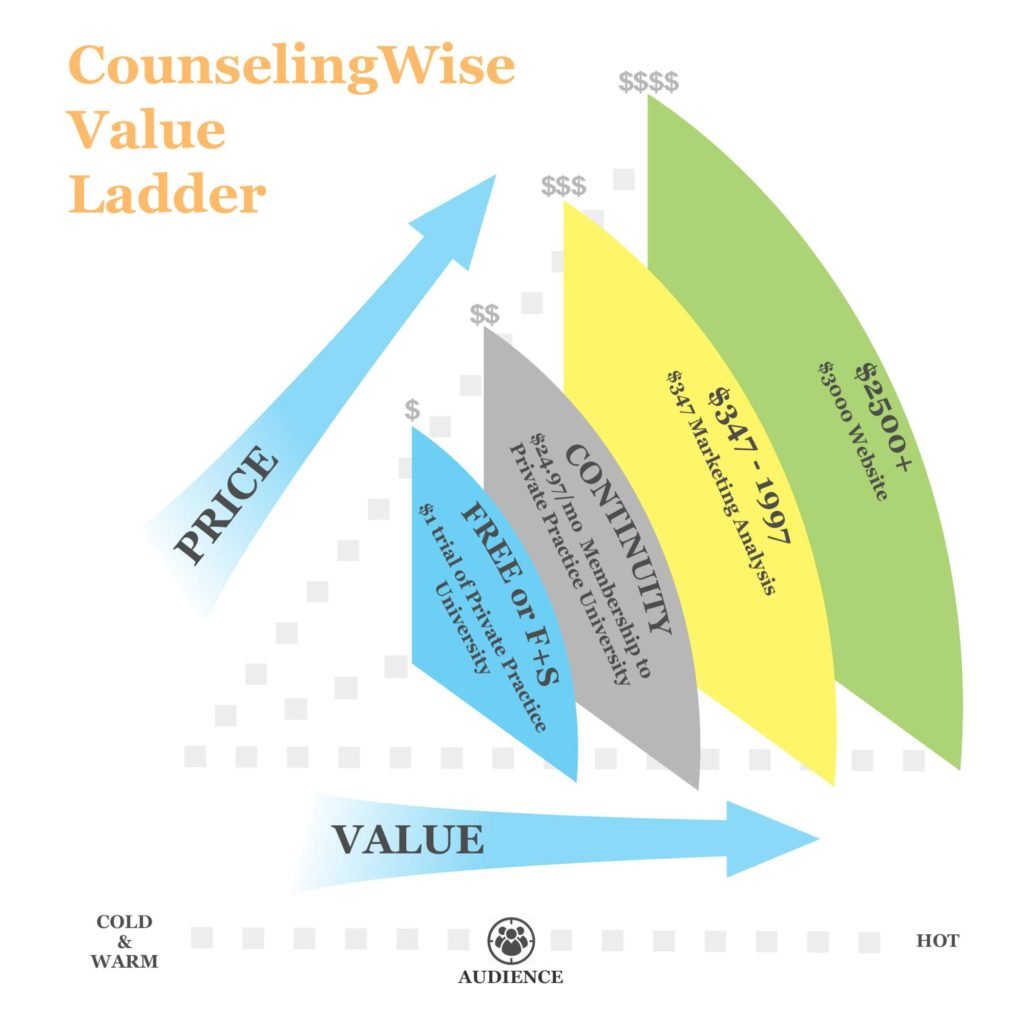
The strategy you use to sell a low-cost product at the frontend of your funnel may be very different than how you sell a high-ticket item at the backend.
By tailoring sales funnel strategies to different levels of the value ladder—and different types of products and services—you can deliver a more personalized user experience and increase conversion rate.
Pro Tip: Of course, online types of sales funnels don’t end when customers make their first purchase. With every opt-in or purchase, you should offer relevant upsells and downsells (each one offering undeniable value). The ability to quickly grow the customer relationship and increase cart size is just one more way funnels have an advantage over other types of online selling mechanisms.
Now, let’s look at some of the most successful sales funnel templates you can use at different stages of the value ladder.
____________________________________________________________________________
Chapter 4 | Back to Table of Contents
How to Use Sales Funnel Templates for a BIG Head Start!
Who knew there were so many different types of sales funnel strategies?
If you’re feeling a little overwhelmed, don’t panic!
The following sales funnel templates are some of my personal favorites for guiding customers through different points and products in my business.
To get the most out of each sales funnel template, consider how it can be adapted and applied to your unique offer and audience.
Frontend Funnels
Frontend funnels are–you guessed it–at the front end of your value ladder.
These types of sales funnels are perfect for cold traffic that you want to qualify as subscribers and buyers.
Potential customers may only be aware of the problem, not your brand or the solutions you provide.
That means you need to have an irresistible offer.
- Free + Shipping
- Free or Low-cost Trial
- Self-Liquidating Offer (SLO)
With the right product, these frontend funnels are proven to work on cold traffic. Even if you aren’t turning a profit at this stage, you can acquire leads at a break-even cost.
I jumped out of my chair when I had my first break-even frontend funnel!
Why was I so excited about breaking even?
Because every one of those customers cost NOTHING to acquire. And once they’d entered my world, I could bring them into a related sales funnel for a higher-cost service.
Knowing I’d earn back what I spent on lead generation meant I could afford to scale up my marketing efforts and reach even more customers.
To my surprise, though, I kept seeing marketers shut down effective, break-even sales funnels because they weren’t profitable.
But, these folks were forgetting that for no cost, they were turning a cold audience into warm leads.
In most industries, a warm audience is worth MUCH more than the profits you can generate at the lowest level of your value ladder.
So, don’t worry if you’re only breaking even with frontend sales funnels. In fact, breaking even should be your goal at this stage.
Now, let’s take a quick look at how a few frontend funnels work.
Free Plus Shipping (use the 2-step template)

This funnel guide is from The Funnel Hacker’s Cookbook by ClickFunnels.
Free + Shipping offers are a common way to turn cold traffic into paying customers.
On the first page, use a video or page script to tell customers who you are, what you’re selling, why they need it, and how they can get it.
This first page should also include a short form asking where you can ship the free product.
After entering their address, customers will be brought to a second page that asks for billing information.
Make sure it’s clear up front that customers will be charged for shipping.
Let’s look at Russell Brunson’s Expert Secrets book funnel one more time (you’ve seen this example before) to see the Free + Shipping offer in action.

↓

Once the customer enters their billing information, confirm their decision and present them with a relevant one-time offer (OTO).

The OTO and other upsells are how you’ll make up for revenue lost giving away the free resource. That means your offer has to be compelling.
Pro Tip:
- DON’T complete the order (or say the order is complete) before offering the upsell.
- DON’T offer a random, unrelated product.
- DO test different upsell offers.
The most effective OTOs typically answer at least one of three questions consumers have:
- What can I do next?
- How can I do this faster?
- What if I need help?
Why use a Free + Shipping template? Customers are more likely to complete the first form when they see how short it is (and that you aren’t asking for credit card information yet). Then, once they get to the next page, they’re already committed to the process of filling out forms.
The Free + Shipping template not only gains a subscriber, but it gets the customer to spend money. And, that shift in mindset–even just paying for shipping–makes the customer more receptive to additional offers.
Self Liquidating Offer (use the 2-step template)

SLOs work well for items priced between about $30 to $99. The idea is to break even on advertising costs (hence the name “self-liquidating”).
Why run a sales funnel just to break even?
Because every upsell is now pure profit!
Since you are selling a more expensive product than a Free + Shipping offer, most SLO funnels will need a longer script.
Whether you present your script in a video or written out on a click-through or sales page, make sure to include:
- Star
- Story
- Solution
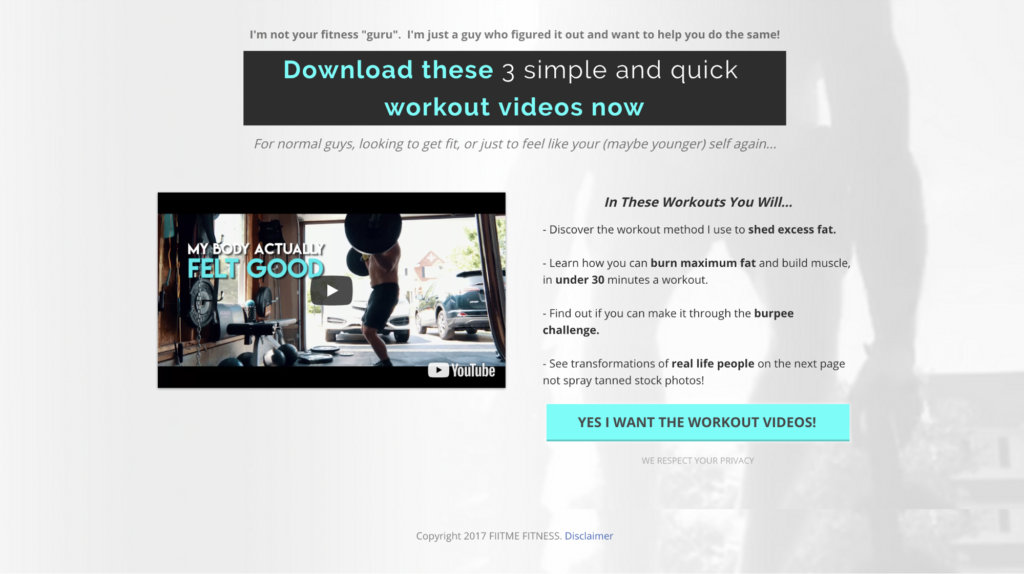
This SLO example is from FiitMe Fitness.
By creating a “star” of the story—a character the audience can relate to—and presenting him or her with a challenge readers understand, you help them visualize the solution for themselves.
It’s a simple strategy with a powerful payoff.
Why use an SLO template? There are almost no limits to advertising reach when sales from your initial offer cover the cost of advertising. It can take a little time and testing to find the right sales script, OTOs, and upsells. But, the right SLO presented to the right audience is nearly unstoppable.
Free Trial Offer (use the 2-step template)

Offering a free trial is one of the surest ways to qualify subscribers and grow your email list.
By providing value and letting customers test-drive your product or service before they make a purchase, you’re actually using two sales techniques in one.
First, you’re letting customers test the product and see how they feel when they use it. If you’ve ever gone to a pet store and spent time with the puppies or kittens, you know how much harder it is to turn down an opportunity once you’ve seen how it will change your life.
In addition to the test drive, customers are also aware that they’ll lose the service if they don’t buy by the end of the trial period. And, the “threat” of losing something valuable can be a powerful motivator.
The Free Trial funnel should clearly state what the customer will receive at the top of the first landing page. As they customer scrolls down (or through additional pages), they find a variety of information designed to increase the perceived value and lower the perceived risk of starting the trial.
Include basic information potential customers are looking for. What is the product? How does it work? What do other people think of it?

Pro Tip: Use benefit-based headers to increase conversion rates. Telling customers you have the “#1 product on the market” is compelling. Letting them know you have the “#1 product to help generate low-cost, qualified leads” is compelling AND solution-focused. The more easily customers can visualize the benefits in their own life, the more likely they are to continue reading and moving through the funnel.
Why use a Free Trial template? Instead of telling people about your product or service, you’re showing them. A free trial lets the potential customer test your ongoing service (or high-ticket offer) without the risk. And, as I mentioned earlier, once a customer signs up for free trial, they’re more likely to buy a membership and respond positively to related offers you present.
Ongoing Service (use the Membership template)
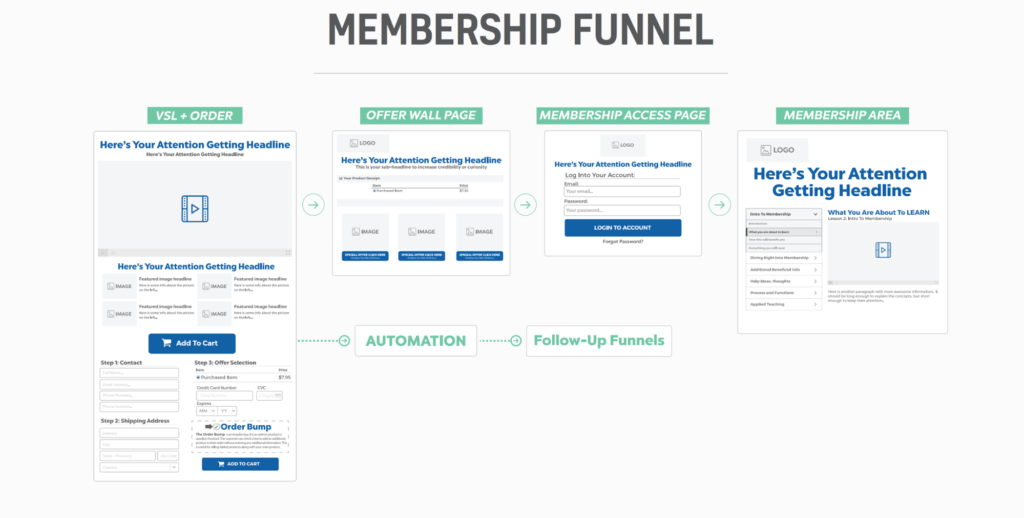
If you don’t have a recurring service option, membership funnels (or continuity funnels) aren’t for you.
For everyone else, continuity funnels are a must.
In some cases, you might use a free membership or trial period to generate leads and grow your email list.
Other times, especially if your membership fees swim on the deep end of the pool, you might use a low cost entry funnel (Free Trial or SLO) at the frontend of your value ladder.
Then, after customers buy your initial offer and get on your email list, you can move them into a more profitable membership funnel.
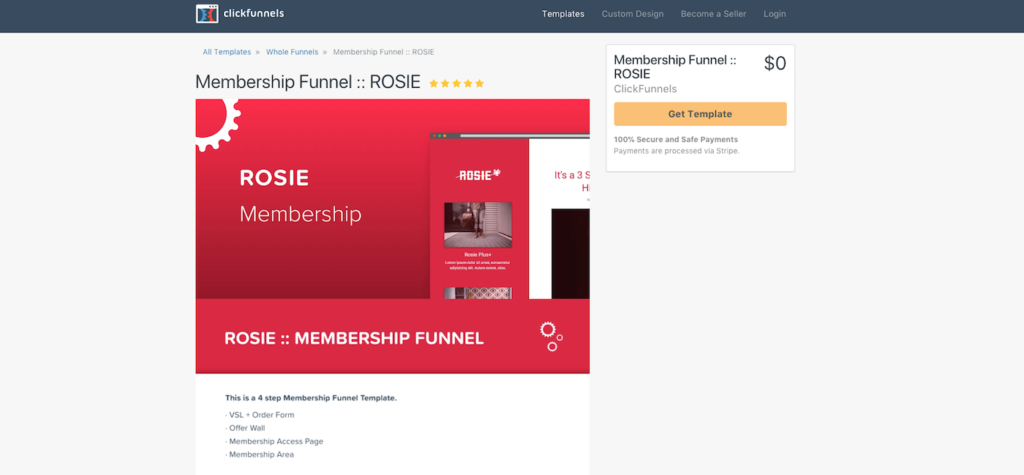
This membership funnel example is from the ClickFunnels marketplace.
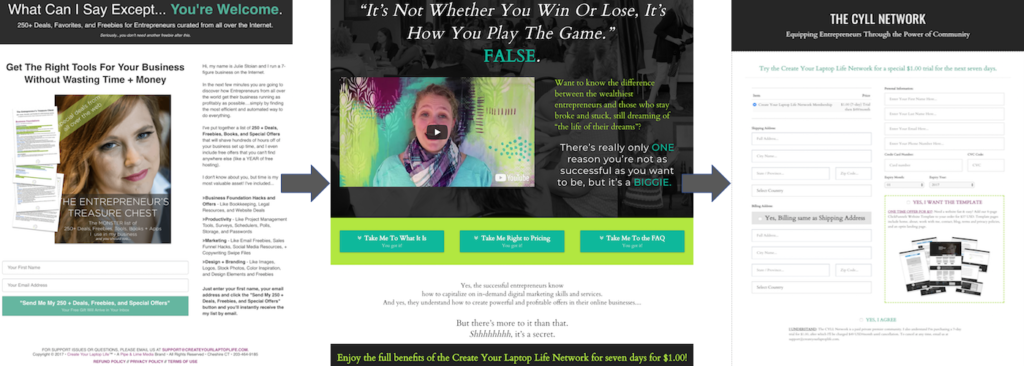
This membership funnel example is from The Cyll Network.
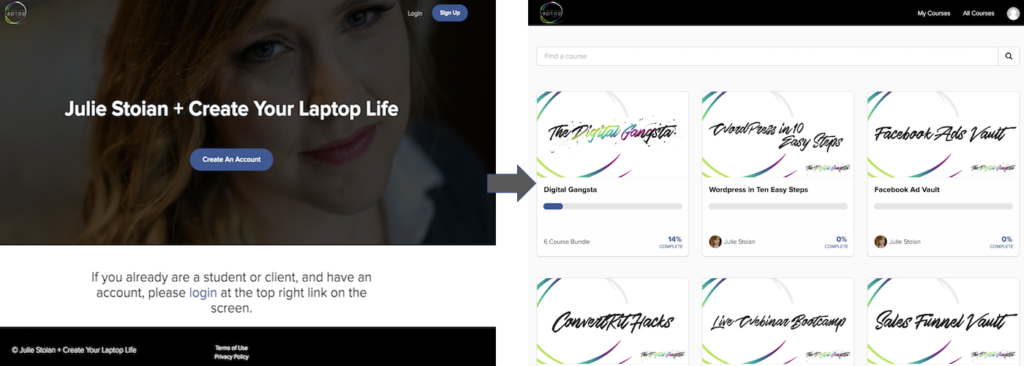
This membership funnel example is from Create Your Laptop Life.
Pro Tip: Whenever you use the continuity funnel in your sales strategy, you’re targeting the same customers you did with the Free + Shipping and SLO offers. If you use two or more of these funnel templates, you can repurpose the same scripts with relatively small changes. How’s that for a time saver?
Why use a membership template? If your business thrives on membership fees—or if you use membership as a way to identify leads for higher ticket services—there’s no reason not to have a continuity funnel.
Mid-Priced Product Funnels
The following funnels are designed for mid-price products. Because of the higher cost, these products typically require more content or a longer script than frontend funnels.
Sales Webinar Template
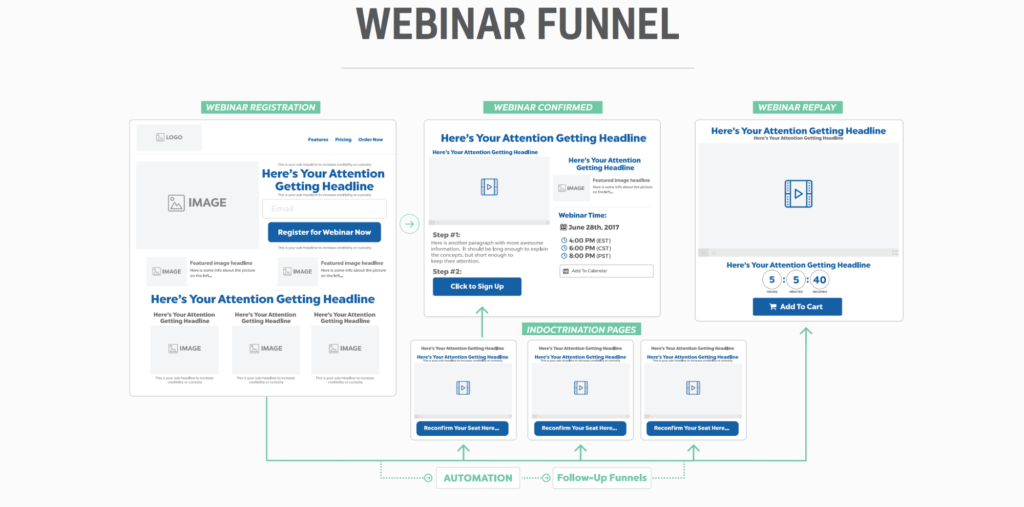
Webinars are as close to an in-person sales pitch as many business owners can get online. They’re effective in closing sales on mid-to-high price items. And because the pitch is made online, you can record and rebroadcast the webinar over and over again.
Start by directing people to a squeeze page with a sales letter or video explaining why they should register for the webinar.
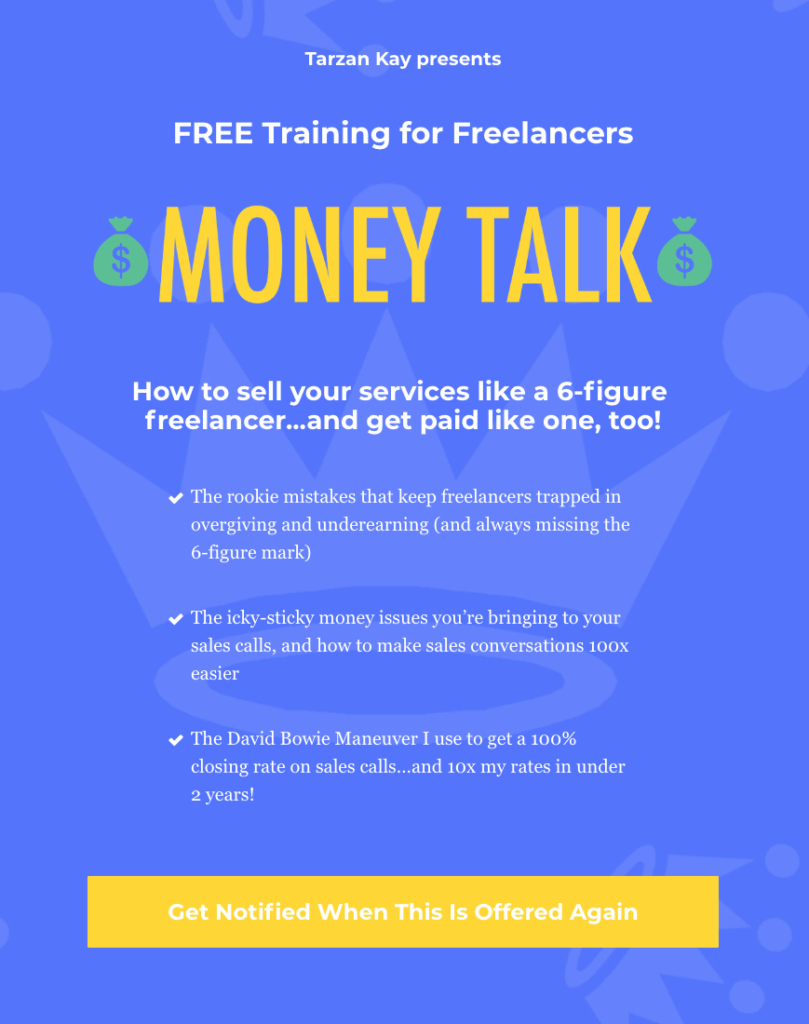
This webinar example is from Tarzan Kay.
By getting someone to register, you qualify them as a subscriber. They’re now on your email list and ready to hear about the solution you can offer.
And, by changing the sales environment with a live (or recorded) webinar, you can turn a surprising number of leads into paying customers.
After you master giving your live webinar (Russell suggests that you do your webinar “live” many, many times to get it perfected), it’s time to build an auto-webinar funnel.
Don’t worry! You just need to add a few quick steps.
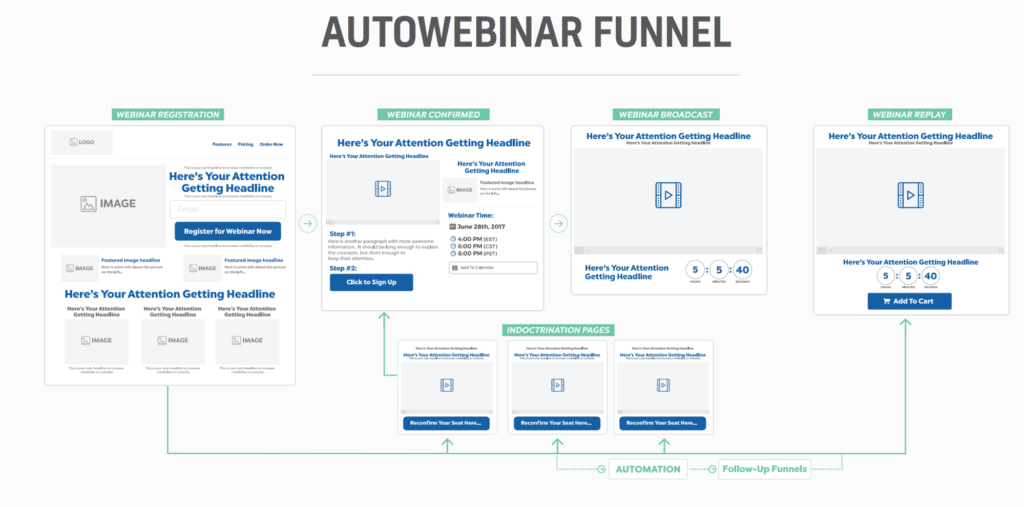
You can keep the registration page you already created. Only now, users are sent to an updated confirmation page. In addition to the date and time for the upcoming webinar, the updated page now gives them an option to watch a replay of “last week’s” webinar right away.
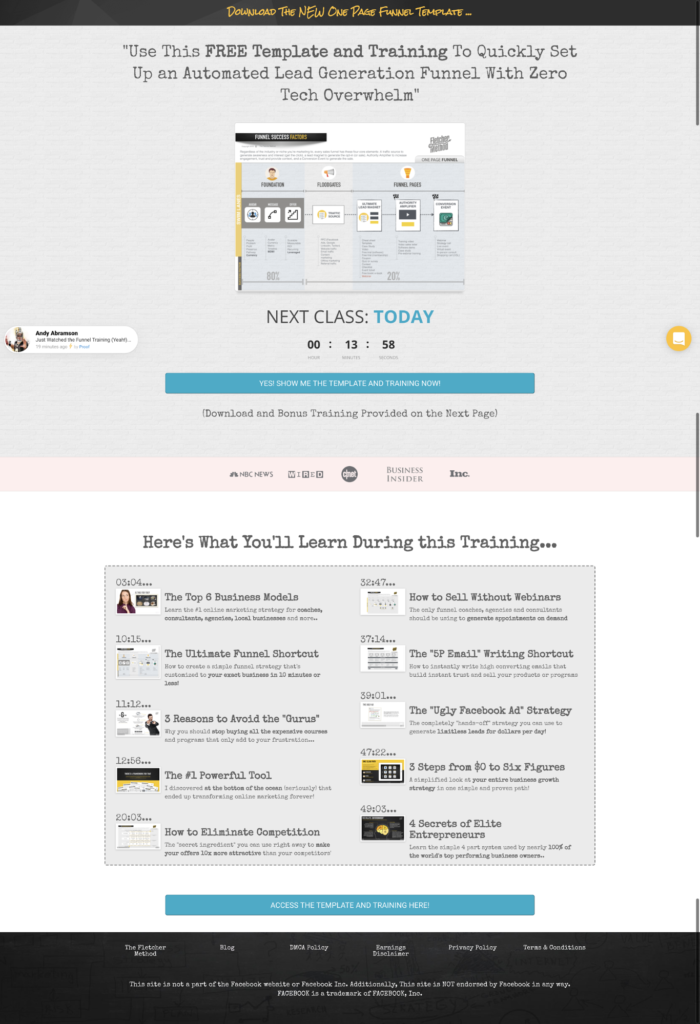
This webinar example is from Aaron Fletcher.
Lastly, because this is an automated webinar and you won’t be there to gauge interest live, take the time to create unique email series that customers will receive depending on how they engage with the webinar.
Someone who sits through the whole webinar should receive a different email than the person who didn’t show up at all—one is ready to buy, and the other needs to be brought back into the funnel.
Why use a webinar template? Webinars are high-converting sales strategies that qualify subscribers and buyers, all through a simple sales funnel that you can automate to generate income 24/7.
Invisible Funnel Template

The Invisible Funnel might be my personal favorite for the good will it builds with customers, all while convincing them to buy mid-range and high-ticket items.
You start by collecting payment information as customers register for the webinar or training (like you normally would).
But, and this is a big one, they’ll only be charged after they view the content and only if they think it’s worth the cost.
Sounds risky, right?
For the Invisible Funnel to work, you have to offer premium content to your audience. Not just good content… some of your best.
The training customers access should be 3-4 hours long and jam packed with your best tips, tricks, and advice.
And by giving customers an opportunity to opt-out of paying for the content, you build trust and confidence. They don’t feel like you’re pushing for a sale, but trying to help them find a solution.
Why use an invisible funnel? The Invisible Funnel can be a little intimidating the first time you put it in place. You’re essentially giving away some of your best content and trusting that customers will pay for it.
The strategy becomes less intimidating when you look at some of the results other businesses have had.
Average attendance for most free webinars is about 30%.
Not great, I know.
When Russell Brunson tested the Invisible Funnel and asked customers for credit card information up front, however, attendance skyrocketed to 85%!
Even after accounting for people who chose to opt-out of paying, the percent of people paying for the Invisible Funnel training was higher than the percent of people who even attend a free webinar.
Woah!
Product Launch Funnel
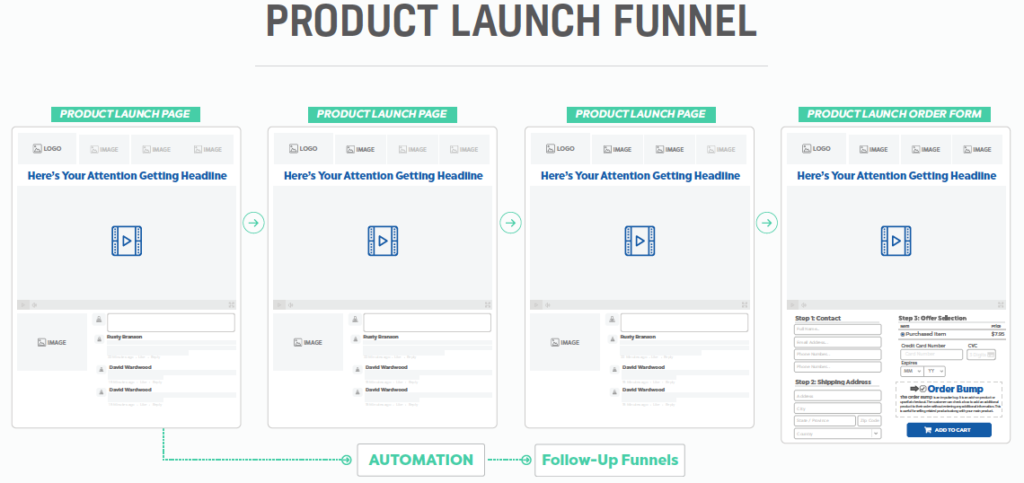
The Product Launch Funnel works best with warm and hot traffic, and it’s become a marketing staple for many big companies.
The funnel is broken down into four videos:
- The Wow and How
- Educate & Demonstrate
- The Ownership Experience
- The Offer
In the first video, you’re “wowing” viewers with a big idea and showing them “how” it is being used in the real world.
The second video takes viewers with you as you walk through the process and demonstrate how they can use your big idea.
The third video lets viewers see what life would be like if they purchase the product or service.
And, the fourth video reveals exactly what you’re selling, how much it costs, and how the viewer can get it.
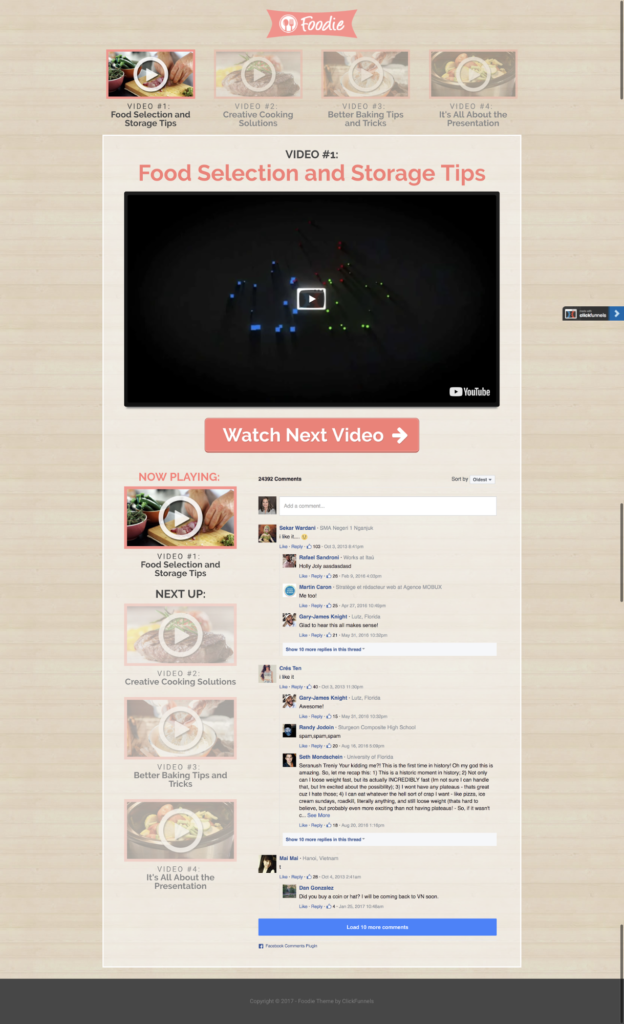
This product launch example is from the ClickFunnels marketplace.
Each of the four product launch videos can be long or short, and you may need to do a little testing to find the right length for your audience.
Why use a product launch template? The four videos in the Product Launch Funnel are a great way to break down sales pitches into manageable, digestible pieces. By sending out just one video a day over four days, you build excitement for the product and teach your audience why they need it before you make the offer.
Backend Funnels
For most businesses, selling high-ticket items requires a high-ticket investment. Using traditional call centers, you might need dozens of salespeople to identify leads and close sales.
High overhead and huge sales teams can quickly eat into profits to the tune of 5-6 figures every month!
No thank you!
Fortunately, there’s a backend funnel designed specifically to generate leads and drive sales on high-ticket products and services found at the very top of your value ladder.
High-Ticket Offers (use the Application template)
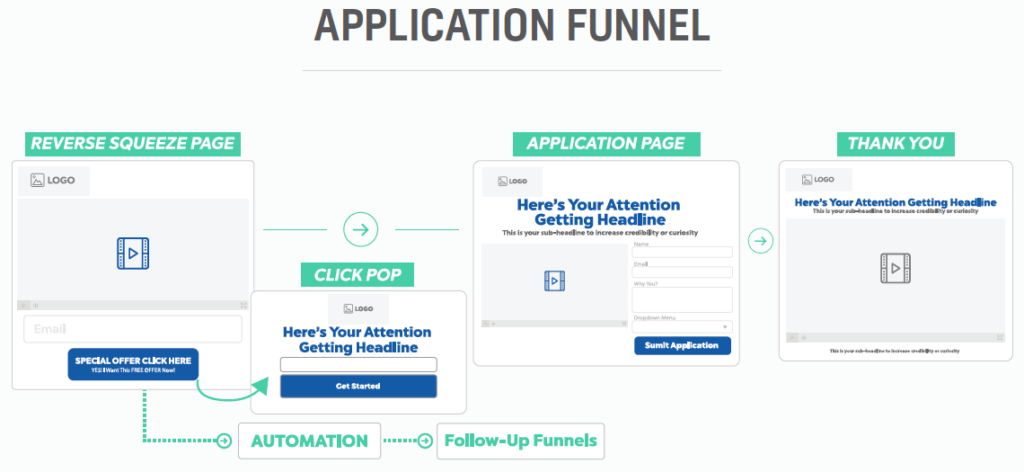
The Application Funnel is an almost unbelievably simple solution to one of the biggest challenges businesses face: finding the big client and closing the big deal.
First, send traffic to a landing page with a case study video explaining the results clients can expect when they buy and use the service.
After the video, interested clients click on a button to “Apply Now” or “Get Started” and move to step two.
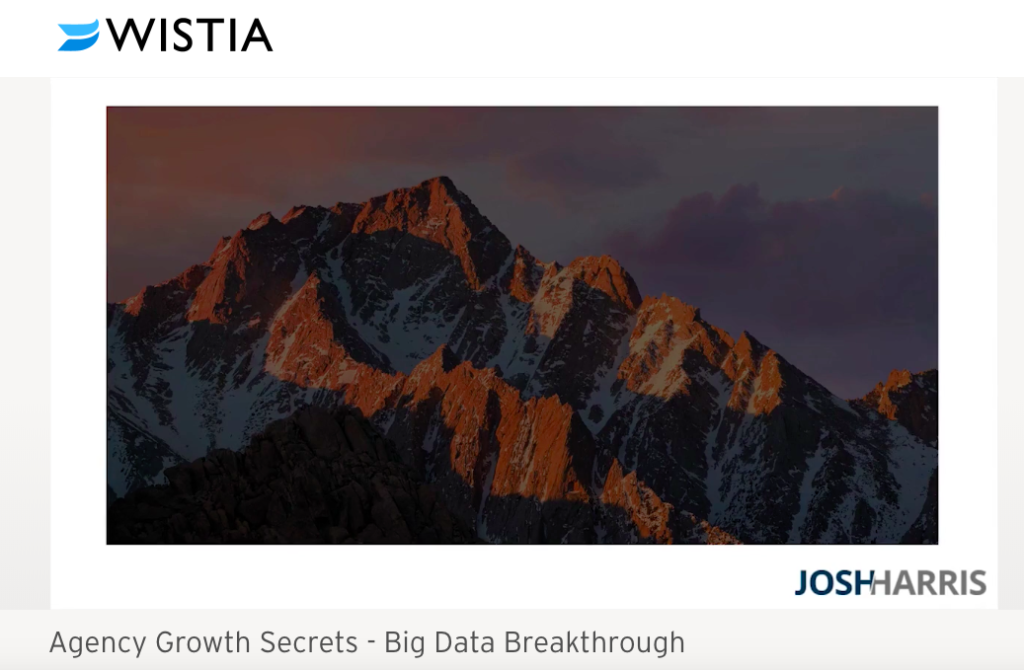

This application funnel example is from Wistia.
On the second page, potential clients fill out a full application. This not only helps your sales team gather all the information they need to identify prospects and create a proposal, but it pre-frames the high-ticket service in the client’s mind.
Now, they’re trying to convince you why they should be a client.

The final page of the 3-Step Application Funnel is a “What Next” page. Here, you want to give clients “homework” to do—something simple that increases value: set their goals, for example.
You should also explain how and when you’ll contact prospects and how clients can contact you if they can’t or don’t want to wait for your sales team.

Why use a 3-step template? Being able to convert cold traffic to sell high-ticket offers is a game-changer. Being able to sell high-ticket items at a fraction of the overhead cost of competitors is a game-winner.
You can find more funnel templates on this regularly updated list from ClickFunnels.
Ok. So you know which templates work best at different stages of your value ladder.
Now it’s time to tailor the design, message, and offer to your industry and audience.
And, you can do that quickly using a process known as funnel hacking.
____________________________________________________________________________
Chapter 5 | Back to Table of Contents
Funnel Hacking: A Shortcut to Designing Sales Funnels that Work
Funnel hacking is the process of investigating the sales and marketing strategies your competition is using.
The goal is to reverse engineer those components that are driving a competitor’s success and strategically apply them to your own business.
Doing your own funnel hacking can be time-consuming, but it’s an indispensable step if you’re going to properly understand your competitors, customers, and marketing campaigns.
I recently started hacking membership funnels as a way to increase conversion rates for my own continuity program.
Here’s the process I used.
First, make a list of all your competitors—both direct competitors and those in shoulder industries that appeal to the same market.
Next, visit each competitor’s site and take notes on:
- What type of copywriting do they use in headlines?
- Are buttons above or below the fold?
- Do they use videos?
- Are there pop-ups?
- Is there an opt-in or sign-up form?
- Do they have any upsells?
- Etc.
There are dozens of elements to consider when hacking a competitor’s funnel. And, as you go through more competitor sites, you’ll begin to identify trends and patterns in your own market.
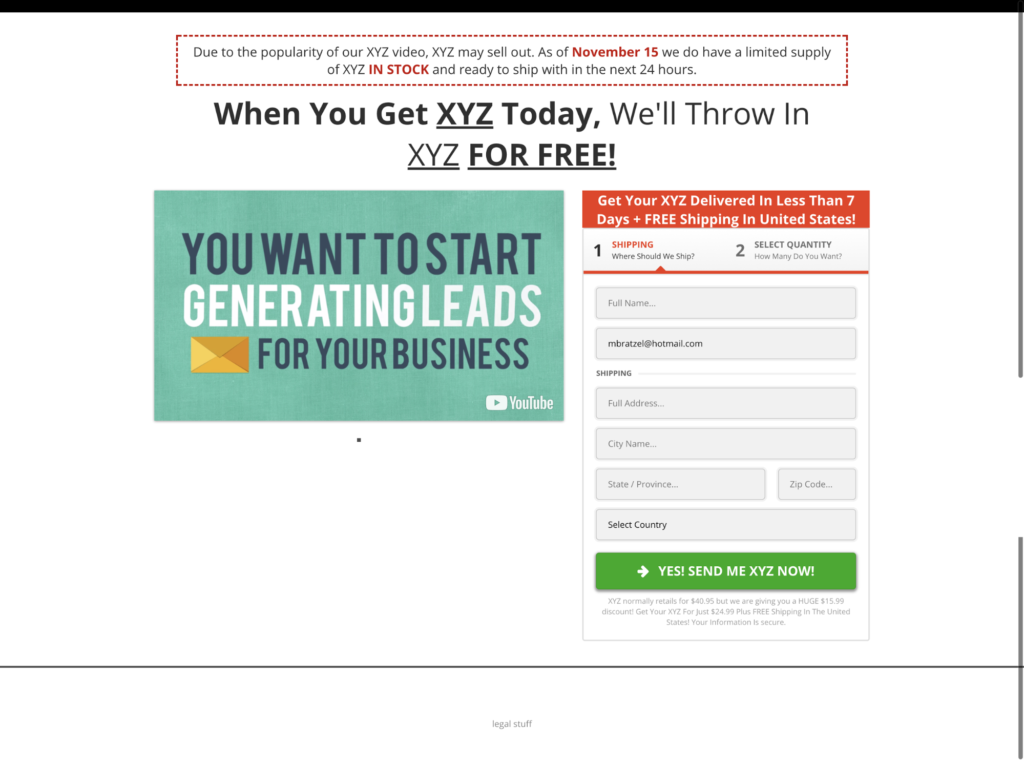
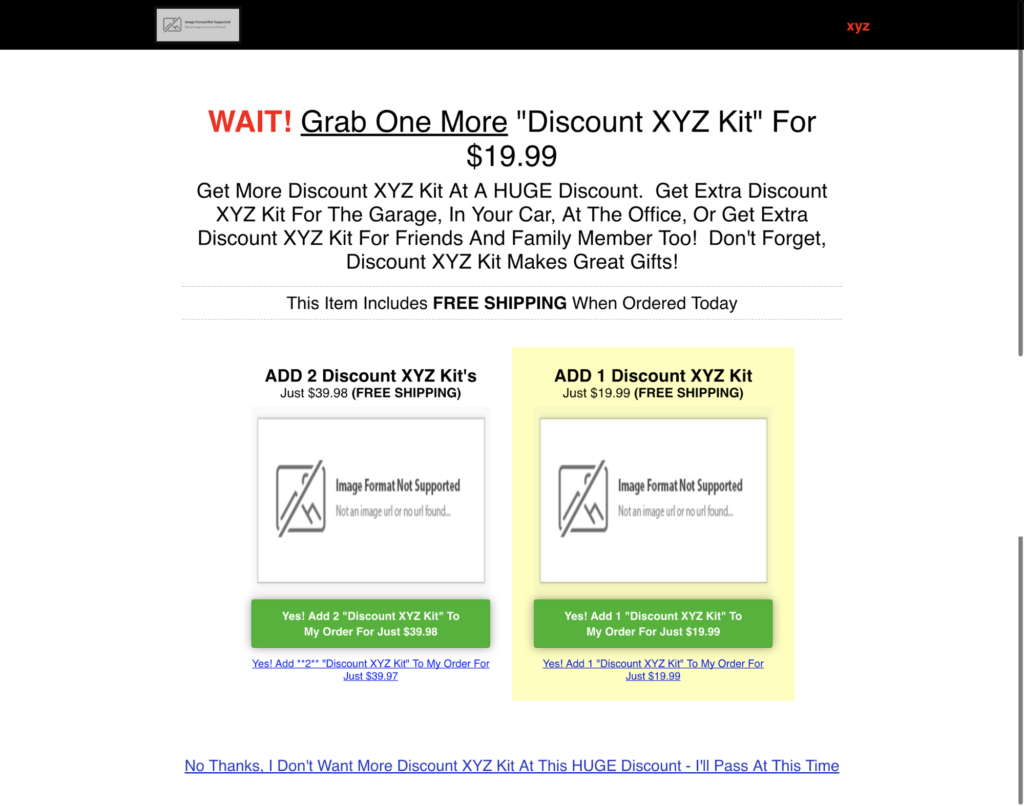
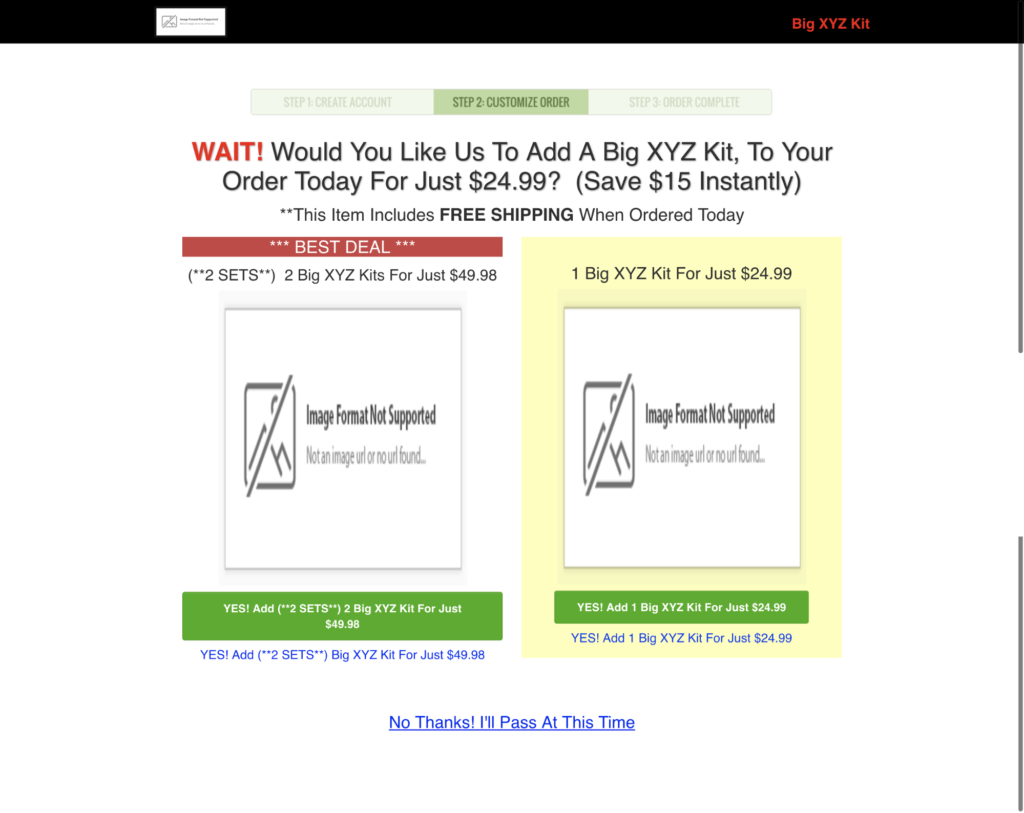
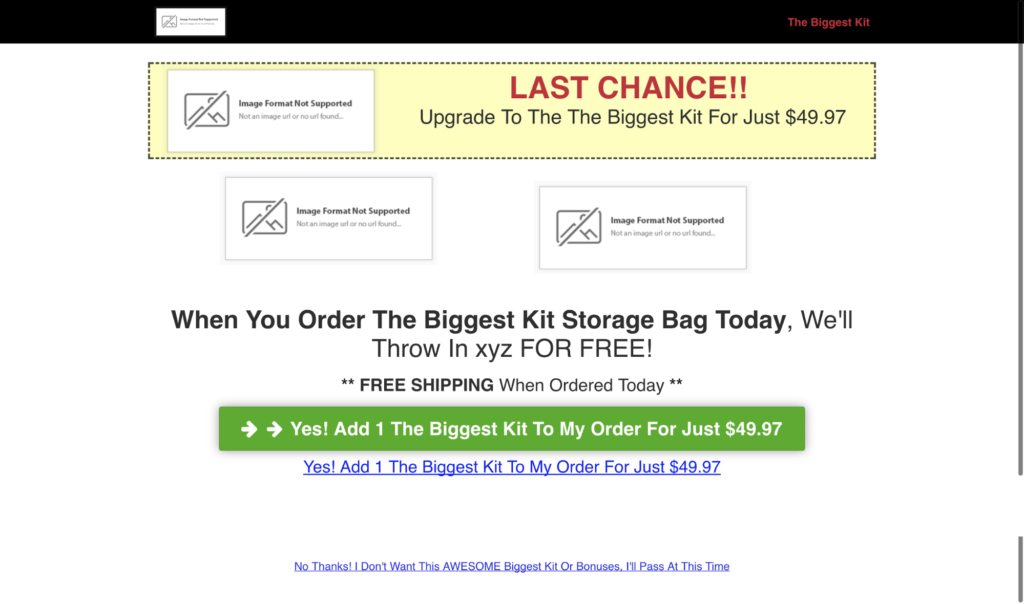
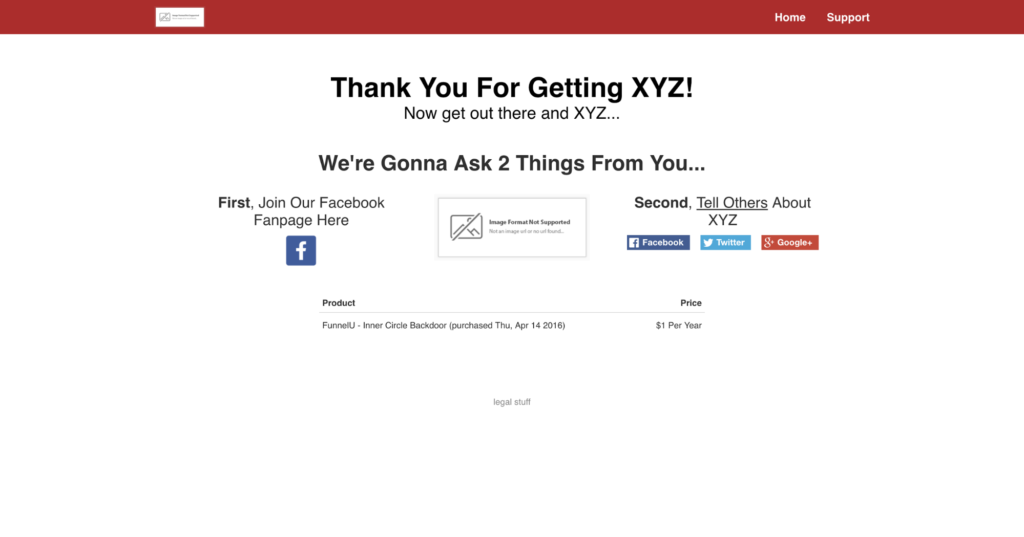
This example is from Funnel University.
Write everything down! Even “simple” details like font size, button color, and word count play a role in determining conversion rate.
Don’t ignore some competitors or discount funnel strategies that successful competitors are using.
Even the best funnel builders don’t know everything about every niche.
When I first heard Russell talk about funnel hacking, he shared a story that really drove home why the process is so important.
He was funnel hacking a competitor for his supplement business when he saw they were selling the same product in their upsell that customers had just bought.
The SAME one!
This makes NO logical sense!
But, offering more bottles of the same supplement actually outperformed other upsell offers!
Russell expected the strategy to fail, but he tested it anyway. And, it paid off in a huge way.
Remember, your top competitors have already put a lot of time and money into developing and testing their sales strategies.
Don’t ignore their hard work—test it and build on it!
Learn more about fast funnel hacking and some of the tools you can use with ClickFunnels Ultimate Marketer’s Blueprint to Funnel Hacking [A to Z].
____________________________________________________________________________
Chapter 6 | Back to Table of Contents
Common Mistakes When Designing Sales Funnels
Making a mistake in your sales funnel isn’t the end of the world. Testing different elements and designs in a sales funnel not only identifies what does work, just as important, what doesn’t work.
Thankfully, we can learn a lot from mistakes our competitors have made.
Mistake #1: Trying to Sell the Biggest Item to the Cold Traffic
In most cases you’re selling to cold or warm traffic, and building a relationship with the customer can yield higher lifetime value.
Besides, your upsell strategy can identify hyperactive buyers and direct traffic toward high-ticket items when they’re ready.
That doesn’t mean you shouldn’t build a high-ticket sales funnel as soon as possible, though!
You’ll need to have this funnel in place for ready-to-buy prospects. And you can alway create frontend funnels to generate leads after your sales funnel is established.
Mistake #2: Throwing Away the ‘No’s Too Quickly
By having a series of downsells as well as upsells during the checkout process, you give customers additional options and keep the sales conversation going.
Some businesses are even using pop-up discounts to turn people leaving the site into paying customers—the ultimate cold traffic conversion!
Mistake #3: Not Following Up Consistently
You can’t make a sale if the customer isn’t thinking about you and your product. Once someone opts-in to an email list or makes a purchase, follow up regularly to age and ascend the relationship.
Mistake #4: Not Following Up Quickly Enough
The people requesting information and making purchases on your site are showing interest in your content. Waiting too long to follow-up could cause them to look elsewhere.
Mistake #5: Not Getting Effective Results or Cost-Effective Traffic
Even if it feels like you’ve done absolutely everything just right, you may not be getting the cost-effective results you need.
If you’re not getting the traffic or conversions you expect, try one of the following fixes:
- Segment your audience
- Change up your content
- Change up your offer
- Change your price point
Mistake #6: Not Having a Simple Payment Option
A complicated payment option is like throwing a hurdle in front of the customer right as they’re about to cross the finish line. Remove obstacles and keep the path to purchase clear.
Mistake #7: Not Having a Call-to-Action (CTA) in All Communication
Communication with customers should always include a call-to-action. The CTA doesn’t have to be to make a purchase. It could be inviting them to submit a question or click on a link to a blog or video you just posted. The goal is engagement.
Mistake #8: Not Measuring Data/Performance
You should constantly be testing different version of your funnel and analyzing performance to see what is and isn’t working.
Ineffective funnels can be improved. Good funnels can always be better.
(Keep reading to learn more about how to set and measure funnel goals and how to split test different stages of your funnel.)
Mistake #9: Having an Overly Complicated Funnel
With so much flexibility in design and purpose, it’s easy to get over-excited and create an overly complicated funnel.
If there are too many steps or the steps aren’t clear, you could be losing customers before the point of purchase.
Mistake #10: Assuming You Already Know What Will Work
Don’t assume you know everything about sales funnel strategies in your niche. No matter how much experience you have marketing and building sales funnels, you can’t know everything about every industry.
Remember Russell’s story about hacking a competitor funnel for his supplement business? If he had stuck with his initial assumption, he never would have tested the new, more profitable upsell strategy.
____________________________________________________________________________
Chapter 7 | Back to Table of Contents
How to Actually Create a Sales Funnel That Works!
Sales funnels are simple in theory.
- Map out your steps.
- Add the basic building blocks.
- Use easy-to-follow templates.
Maybe that’s why I was so surprised when I had such trouble building my first funnel.
As I quickly learned, the actual act of putting all the pieces together from scratch and getting them to communicate online can be surprisingly complicated.
Once you understand the strategy–what type of funnel, price points, and offers you should have at different stages of the customer journey–you need to map out the actual funnel.
Will you use a quiz or squeeze page to pre-frame the offer? What price will your first offer be? How many upsells and downsells will you have?
You need to plan your follow-up sequence. How will you communicate with newly qualified subscribers and buyers?
Once you know what you want, it’s time to put everything in place!
If you remember my story at the beginning of this article, this is where I choked!
Thankfully, sales funnel software has made the whole process much easier and faster.
Just to give you a taste of how to build a funnel with sales funnel software, here’s a 9-minute video where Shawn Bayley, “The Sales Funnel Nerd,” builds a funnel with:
- a $20 product on the frontend
- 2 one-time-offers (OTOs)
- a Thank You page
This video is from Shawn Bayley.
There are many other videos showing funnel creation on Shawn’s YouTube channel, so check it out!
____________________________________________________________________________
Chapter 8 | Back to Table of Contents
Sales Funnel Software to Make This Easy!
The right software can save hours of planning and set-up on every funnel you create.
I told you how much I struggled to build my first funnel manually.
Once I started using sales funnel software, though, the process became as easy as clicking pieces into place.
The ready-made templates and customizable designs make it easy to quickly build high-converting sales funnels. And after extensive testing, one sales funnel software option stood above the rest.

ClickFunnels
I love ClickFunnels. There. I said it.
The program is simple enough that anyone on my team can use it, but powerful and smart enough to keep our tech and marketing people happy.
Why do I recommend ClickFunnels?
Staying true to the idea of the funnel as a marketing strategy, the power in the ClickFunnels system is in its simplicity.
Step #1: Decide what type of funnel you want to build.
Step #2: Choose the template you want for each step of the funnel from a list of proven designs, or create your own.
Step #3: Finalize the funnel design to see all the steps together.
Step #4: Create the copy: edit text, add videos, create forms, and tie opt-ins to your email autoresponder.
In less than a day (and as little as one hour!) your new funnel has gone from an idea to a live process!
And, because ClickFunnels founder Russell Brunson wrote the book on sales funnels (literally, you can buy it here), he includes everything you need for the entire funnel-building process, from brainstorming to data and performance analysis.
Get started with a free, two-week trial at www.ClickFunnels.com.
Page Design Hacks
While funnel pages are separate from your website, keep the design consistent. Use the same colors, font styles, and tone you use on your traditional website.
If you don’t have a traditional website—and you don’t really need one with the right funnel structure—use a design that matches your pre-frame, whether you’re bringing traffic from an email or a banner ad.
Here’s an example of a website with a “matching” funnel, to keep branding consistent.

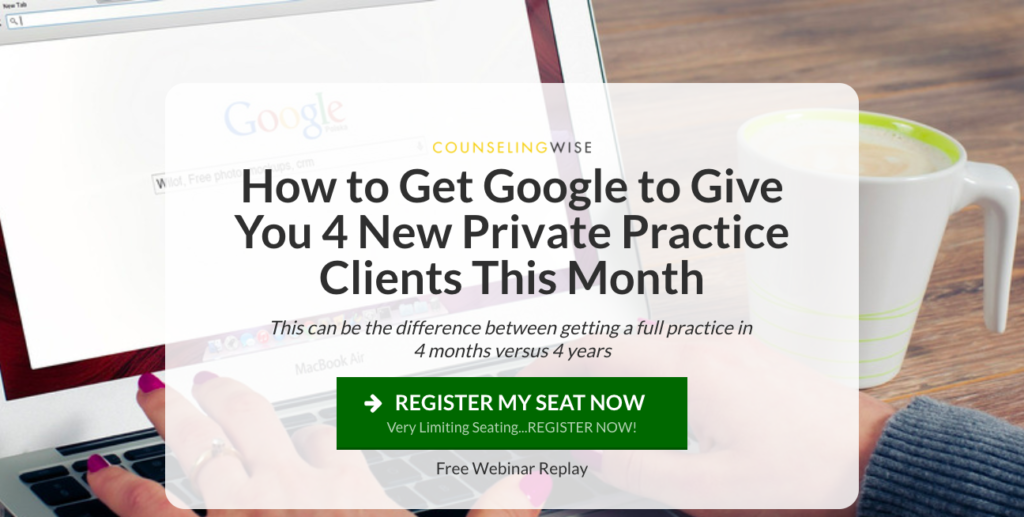
This example of a matching site and funnel is from CounselingWise.
Keep your main call-to-action above the fold so users don’t have to scroll down to move to the next step in your funnel.
Remember AIDA!
Landing pages can be long or short, but they should be strategically designed to attract attention, establish interest, create desire for the product or service, and prompt a specific action.
Look at competitor funnels and model your design off the ones you like most. What do you like about their design and how can you adapt it to fit your business?
Don’t neglect headers and text! After the feature image, your header text will be the first thing most people see when landing on the page. It should be clear and compelling (and typically LARGE!)
Add a video! Video case studies, testimonials, and how-tos drive up conversion rates while pre-framing customers for the next step in the funnel.
Test design changes. Just like you should test different content and offers, small design changes can have a big impact on customer experience.
____________________________________________________________________________
Chapter 9 | Back to Table of Contents
Driving Traffic to Your Sales Funnel
Types of Traffic
Traffic temperature affects every step of the sales funnel.
Your pre-frame and initial offer should change depending on how you are communicating and who you are targeting.
Here’s what I mean.

This graphic is from Digital Marketer.
Cold Traffic
What is cold traffic? Cold traffic is problem-aware. They know they need a solution, but they don’t know about your brand or product yet.
What are the best pre-frames for cold traffic? The best cold traffic pre-frames start with a question or problem that potential customers have: “Have You Tried Everything to Sleep Better But Still Can’t Get a Full Night’s Rest?” or “This Under the Radar Problem May Be Killing Your Lead Generation”
For cold traffic, try using:
- Quiz
- Article
- PPC
- News
- Blog
- Video
Here’s an example of a video ad on Facebook to cold traffic.

This cold traffic ad example is from Mike Dillard.
What are the best funnels for cold traffic? The best cold traffic funnels include a free or low-cost opt-in incentive designed to qualify subscribers (and sometimes buyers).
- Free + Shipping
- SLO
- Ongoing Service
- Invisible Funnel
Cold funnels typically need a longer pre-frame than funnels you would use for warm or hot traffic.
Speaking of warm traffic…
Warm Traffic
What is warm traffic? Warm traffic is solution-aware. These potential customers are already familiar with your brand or the solution you provide.
What are the best pre-frames for warm traffic? Warm traffic pre-frames should start with a solution that potential customers want or need: “Sleep Better at Night with This Simple Trick” or “The Email Marketing Secret that Increased My Click Rate by 55%!”
- Article
- News
- Blog
- Video
- Pre-Sell Page
- Social Media
Here is an example of a Facebook video that attracts warm traffic, in this case, people who are most likely already aware of biohacking or nutrition solutions.

This warm traffic ad example is from Habit.
What are the best funnels for warm traffic? The best warm-traffic funnels pick clients up 1-2 stages into the buyer journey. Prospects are already aware of the problem and they’re searching for a solution.
The goal with warm funnels is to qualify a buyer.
- SLO
- Ongoing Service
- Sales Webinar
- Invisible Funnel
- Product Launch
The pre-frame is typically a little shorter than with cold traffic.
Hot Traffic
What is hot traffic? Hot traffic is already familiar with your brand and the solution you provide.
They are on your mailing list, they follow you on social media, and they’ll keep buying from you as long as you’re offering value.
What are the best pre-frames for hot traffic? While hot traffic can use the same pre-frames as cold and warm traffic, you can generally use a shorter pre-frame or script.
The hot traffic pre-frame is more about introducing the product or service and showing value.
You aren’t convincing traffic they have a problem, just showing them the best solution.
- Review Article
- News
- Blog
- Video
- Pre-Sell Page
- Social Media
- Sales Page

What are the best funnels for hot traffic? Hot traffic funnels can be shorter than cold and warm-traffic funnels.
These customers are searching for solutions right now, and many will make a purchase if you can show them the value in your offer.
- Ongoing Service
- Sales Webinar
- Invisible Funnel
- Product Launch
- High Ticket Funnel
How to Identify Sources of Traffic
Knowing your traffic sources will help you determine traffic temperature so you can fill your funnel with qualified leads.
What do I mean by qualified leads?
Even if you’re bringing in cold traffic, some leads are more “qualified” than others—they’re more likely to become subscribers and buyers.
You can identify these qualified leads by identifying audience groups and where they spend their time online.
The internet has made it easy for people with shared interests to connect. And, if you know where to look, you can find large groups of qualified leads in just a few minutes.
Who should you look for? Consider who your dream customer is—what questions do they have, what gets them excited, what publications do they read or subscribe to, etc.
The more you know about your audience, the more you can tailor your marketing.
Where to find them online: Finding where your dream customers congregate will take some time, but every new source can generate hundreds or thousands of new qualified leads.
Look for forums about your niche or industry. Find publications they subscribe to and submit a guest post or ask for a referral in the publication’s next email blast.

This forum example is from Weight-Loss.Fitness.com.
Reddit is another great way to find traffic sources. Find the Reddit forum or forums for your industry and see what potential customers are talking about. What are they worried about? What sites and content are they discussing?

This forum example is from Reddit.
In addition to forums, you can also find audience groups on Facebook and other social media platforms or through the use of PPC ads.
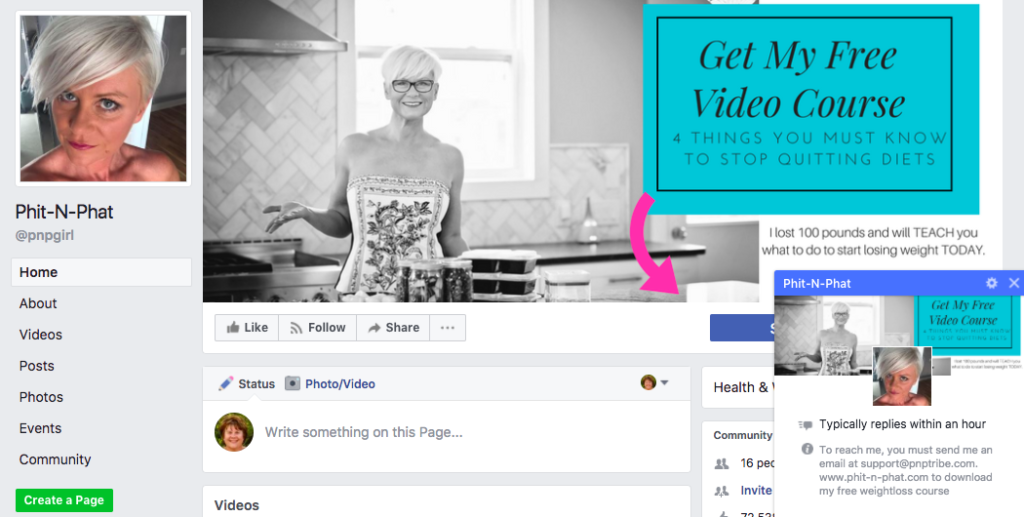
This Facebook group example is from Phit-N-Phat.
The National Enquirer approach: Once you find a traffic source, you’ll only have a split-second to grab the reader’s attention and get them to click over to your site.
That’s why Russell Brunson recommends using the National Enquirer approach: catchy pre-frames, unusual images, and short, curiosity-inducing headlines.
This is not clickbait!
You need to grab the consumer’s attention, but you also need to deliver on the promise of the headline and image.
If the landing page doesn’t offer the content the reader expects, or if a design or header change makes them think they’ve landed on the wrong page, they’ll leave your site… probably for good.
Keep your message and design consistent between your ad (or other pre-frame) and the landing page.
____________________________________________________________________________
Chapter 10 | Back to Table of Contents
Sales Funnel Management: Metrics to Measure
Setting Goals
Every funnel is designed with a single purpose in mind.
That means every funnel needs clear goals and metrics you can measure to analyze performance and effectiveness.
Are you trying to drive sales or qualify subscribers? Are you looking to break even on lead generation and make money on the backend? What sort of return on investment are you expecting?
Setting clear goals allows you to strategically test the structure, design, and content in your funnel to maximize ROI.
So, what sort of metrics should you measure?

Cost of Leads vs ROI: Which Metric Matters More?Of course, there is a difference between knowing that you need to set goals and knowing which goals to set or how high to set them.
Some businesses focus on cost per lead (how much it costs to get one qualified lead or subscriber). They may set goals like “$1 per lead” as a way to manage marketing costs.
Other businesses prioritize ROI over the cost of lead generation. The idea is that no matter how much a new lead costs, a high enough return on investment will always justify the cost.
So, which is best for your business?
ROI is much more important than lead costs.
Let’s say it costs $100 to get 100 leads to your site. That’s $1 per lead, right?
But, if 2 people convert at $100 each, you have a 100% return on your investment.
Companies that focus on lead generation costs can get stuck in analysis paralysis, constantly trying to improve the cost per lead without scaling up efforts to generate more total leads.
Others hit their cost-per-lead goal and stick to that figure, worried they’ll lose customers or increase costs if they try something new.
A business that prioritizes ROI, on the other hand, will see that they earned a 100% return. And, knowing what to expect, they can scale the offer and continue investing more to drive greater returns.
Lead costs set a goal to reach. ROI sets a benchmark to surpass.
____________________________________________________________________________
Chapter 11 | Back to Table of Contents
Optimizing Your Sales Funnel
Methodically Testing Each Step
As easy as the right software makes it to create a working sales funnel, no one builds the perfect sales funnel on the first attempt.
That doesn’t mean you did something wrong during setup!
In fact, this is another opportunity to rise above your competition.
Many businesses will stop testing a funnel once it starts working (if it ain’t broke, don’t fix it).
Some worry they’ll lose customers if they make a change. Others are already moving to their next marketing campaign, and they’d rather try something new than spend time testing and improving an existing funnel.
Even after you start generating the traffic or conversion numbers you need, it is almost always worth the effort to continue testing the funnel.
Let’s look at how to test each stage of the funnel with a real-world case study.
Dustin and Lacy Baler were losing money on their health food blog.
With great traffic numbers (5,000 visitors every day!), the food blog was clearly delivering compelling content and engaging potential customers online.
But, after reaching the site, customers weren’t taking the desired action: opting-in or making a purchase.
So, the Balers took a deep dive into their sales funnel and email marketing strategy and began testing.
First, they looked at the pre-frame—what sources were bringing the most traffic to their site and how could they leverage that to generate more leads.
They also looked at types of media (video, blog, quiz) and topics their audience engaged with. In this way, they could shift their focus and message to increase interest, boost email conversions, and even identify new products to sell.
Next, the food bloggers began using pop-in forms and A/B testing different incentives and form designs to increase conversions.
What’s the pay-off?
By testing and optimizing their funnel, the Balers were able to increase email subscribers by 726%!
Clearly, funnel optimization is a must. And, it all starts with split testing.

This image is from ClickFunnels.
A/B Testing (Split Testing)
Split testing is sometimes referred to as A/B testing because you are comparing two versions of a form or content: version A and version B.
Split testing is generally done on a small scale to a representative test market.
Just like going to the optometrist, you’re picking which of two choices is better, then repeating the process to find the best prescription.
What should you test in each funnel stage?
- Which header gets more clicks?
- How many people opt-in when a button is green vs red?
- Do users prefer a free webinar or printable cheat sheet?
- How much should you charge for each offer?
- How many upsells should you use?
- Should you include downsells?
- Do you get more conversions with a 1-step or 2-step form?
- Does a pop-in form or an above-the-fold form convert better?
- Does an infographic or a video pre-frame generate more leads?
- And so on.
There is almost no limit to what you can test. Now, let’s look at how to test.
How to A/B Test Your Funnel
Establish a benchmark. What is the industry average? What is your current conversion rate?
Determine follow-up tests. Don’t stop testing just because you found a clear, actionable result. Use that to take your testing further.
If a red button converts higher than a green button, test red vs orange. Or different shades of red. Or change the text on the button.
Document results. Without clear data, testing becomes a game of chance instead of an exercise in fine-tuning.
Which email headers affect open rate? Which call to action drives more clicks? What offer converts at a higher rate?
Make sure you have a plan for what data you’re collecting, how you’re gathering the data (from what sources), and how often you’re reviewing the data as a team.
Segment lists to target specific audiences. Are you bringing in cold, warm, or hot traffic? How far along are they in the buyer journey? If you sell pet products, do they own a dog or a cat?
Taking time to segment your list allows you to target specific audiences and send personalized offers that convert at a higher rate.
Brainstorm challenges and more opportunities for optimization. Don’t limit yourself to what you test or how you test. Look for new opportunities to demonstrate value.
The Invisible Funnel I mentioned earlier didn’t exist until the process was tested on a smaller scale and proven effective. Now, companies around the world are using it to qualify leads, subscribers, and hyperactive buyers.
Sales Funnel Leaks and How to Plug Them

This image is from Chargify.
No matter how strategic you are in planning, setting up, and testing each step, at some point you’ll run into holes in the funnel where customers are falling out of sales process.
To find the leak in your funnel, you’ll need to collect data. How far in the funnel are customers getting before dropping out? At what point does your conversion rate drop?
Once you identify the leak, you need to choose how you’ll plug it. You can change the design, the script, or the offer–each can work under the right circumstances.
If you’ve been testing your funnels, you’ll already have a large pool of data to help choose the right solution.
If you haven’t been split testing, a leaky funnel is the perfect opportunity to start.
Here are a few common sales funnel leaks and how to plug them.
Funnel Leak #1: Poor Copy
You only have a few seconds (at most!) to grab a reader’s attention once they hit your landing page.
Even the people who stay on your site are typically skimming the content.
Wait a sec!
Is it really worth all the effort to create great copy if people are only reading a fraction of your message?
Absolutely!
With increasing competition and decreasing attention spans, you have less time to convince each potential customer.
That makes every word more important.
By creating great copy that’s easy to navigate and skim, you’re providing value to customers and actually increasing the average time they spend on the page.
If you’re bringing in plenty of traffic but failing to get conversions, chances are you have a “content” or “offer” problem.
So, how can you repair weak content?
- Let your brand personality come through (be a relatable character)
- Tailor the message to your audience
- Shorten sentences and paragraphs, but provide MORE depth
- Write at or below a 9th grade reading level
- Use bullet points or numbered lists
- Include a subheader or image every 200-300 words
- Add CTAs at the top and bottom of the content (and possibly middle)
- Contract with a digital copywriter or copywriting agency
Funnel Leak #2: Wrong Offer
Even the best landing page and sales script won’t work if you don’t have the right offer.
That doesn’t mean it’s a bad offer. It’s just not converting.
There are a few reasons a great offer might fail to convert.
- You value the offer more than your customer does.
- There’s no clear way to order.
- You’re not promoting the offer enough.
- You don’t have a pre-frame.
- The pre-frame message and design doesn’t match the sales page.
So, how can you fix a wrong offer?
- Change an ebook offer to a video (or vice versa)
- Add more and clearer CTAs to help customers place an order
- Promote the offer (PPC, Facebook, email)
- Use a shorter form
- Reduce risk by using a free trial, money-back guarantee, or invisible funnel
If you have great copy, design, and an amazing offer on your landing page but you’re still converting below 20%, it could mean you have a traffic leak.
Funnel Leak #3: Traffic Problem
Segmenting your audience allows you to drill down and provide personalized offers.
But, targeting the wrong audience or sending a segment through the wrong funnel can undo all your hard work!
And, trying to draw conclusions from low traffic numbers can be difficult, at best.
It might seem like you have a problem with your offer, when the truth is that not enough people have even seen the offer.
How can you tell the difference between the wrong offer and poor traffic?
Consider your current and expected conversion rates.
- 100 people land on your landing page
- 40% of people opt in – 40 new subs
- 3% of people buy tripwire – 1.2 purchases
- 10% of people buy the OTO – 0.12 of a person
Even with a 40% opt-in rate, this funnel may not have had a single person purchase the OTO. That doesn’t mean the OTO isn’t a great offer-there just hasn’t been enough traffic yet.
Now, let’s say you bring 1,000 people to your landing page every day.
- 1,000 people land on your landing page
- 40% of people opt in – 400 new subs
- 3% of people buy tripwire – 12 purchases
- 10% of people buy the OTO – 1.2 purchases
To fix “broken” traffic numbers, start by reviewing audience segments and how they overlap in different funnels. For example, are you sending all pet owners (including cat owners) through a dog food funnel?
If audience segments are being guided to the right funnels, the traffic problem might be in your pre-frame.
Look at click rate and cost-per-conversion on paid ads.
Consider audience attitude and behavior, especially if you change the sales environment at some point in your funnel
If you know when your audience is most receptive to an offer, you can plan your funnel around that timing. Are you sending offers to stressed customers on a Monday, for example, or happy customers on a Friday?
If you have a traffic problem in your funnel, there are a few potential fixes you can try.
- Change who you target with paid ads
- Make sure the message and design on your pre-frame and landing page match
- Change your pre-frame (an email offer to hot traffic may not convert when shown to cold traffic as a Facebook ad)
Learn more about sales funnel leaks and how to plug them here.
____________________________________________________________________________
Chapter 12 | Back to Table of Contents
Using Sales Funnels to Ascend Your Customers Up Your Value Ladder
Continue the Conversation After the Conversion
Getting a customer to opt-in to your newsletter or make a purchase is just the beginning of the customer relationship.
Customers typically start near the bottom or middle of your value ladder. By keeping the conversation going after you secure a purchase (after you’re done upselling), you are aging and ascending the relationship and moving customers up the value ladder.
The truth is that about 20% of the people who follow you are going to generate about 80% of your revenue.
So, take a little time to reassure customers that they made the right choice in signing up or making a purchase.
Continue to provide them with valuable content based on their interests, pain points, and how they have engaged with other funnels.
Not only are you keeping yourself top of mind between sales efforts, but you are keeping that traffic piping hot so they’re more receptive when you recommend a new product or service.
Nurturing the Big Sale
It’s much easier to make a sale–especially on a big-ticket item–when customers trust you.
To that end, there’s no replacement for building a long-term relationship with your subscribers.
Use email marketing to show your personality and become a relatable and reliable source of value for your audience.
Pro Tip: Many business owners worry they’ll overload customers if they send more than one email every week or month. In my experience, every day you aren’t offering value to your followers is a day you’re losing sales. Use different email series and styles depending on traffic temperature and what funnel the user is currently moving through.
Ready. Set. Build.
Building a sales funnel takes time. But, with the right strategy and tools, it doesn’t have to take much.
Ready? Set? Start building.
Thanks for reading Sales Funnels: The Ultimate Guide which appeared first on ClickFunnels.
